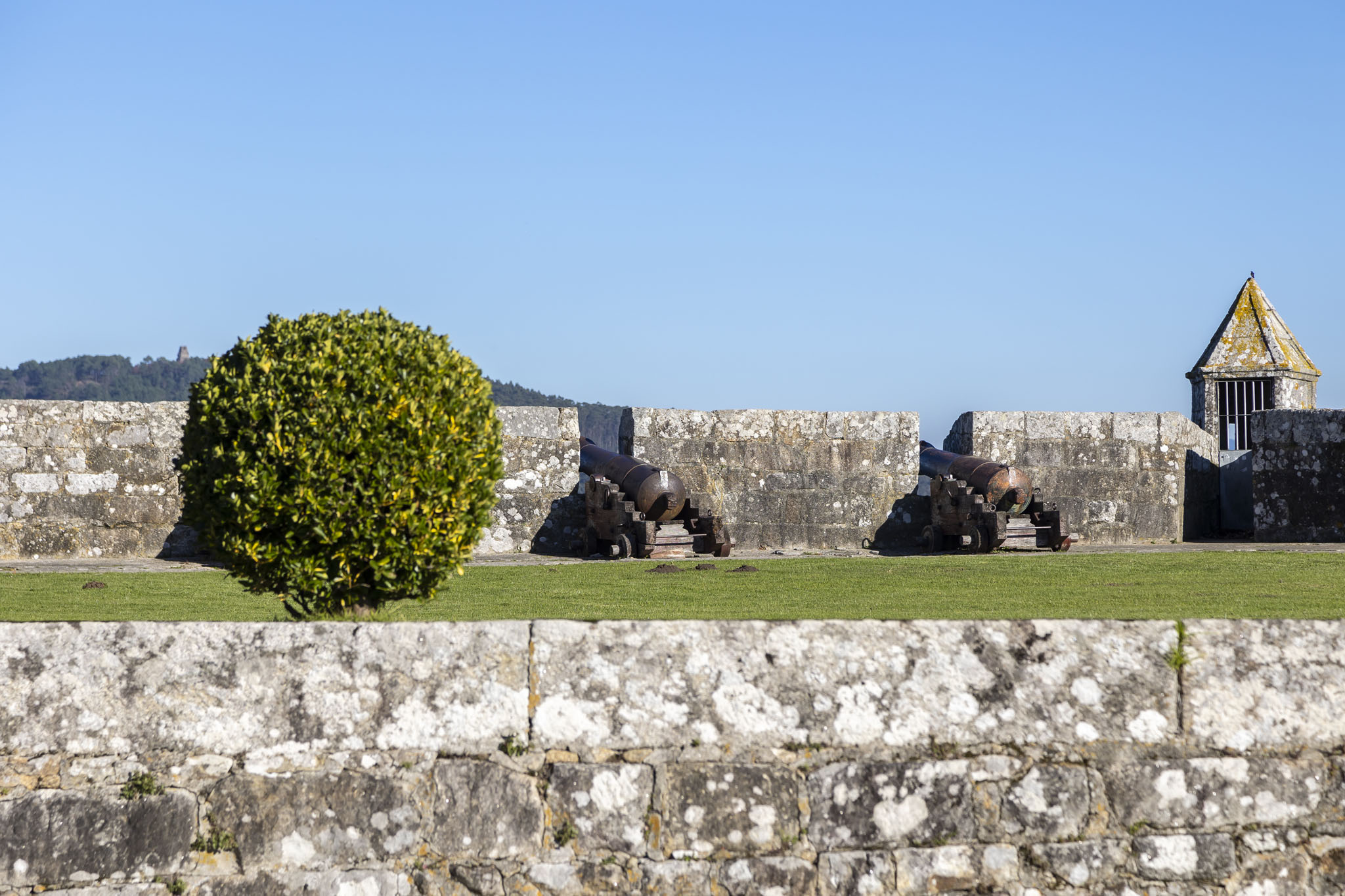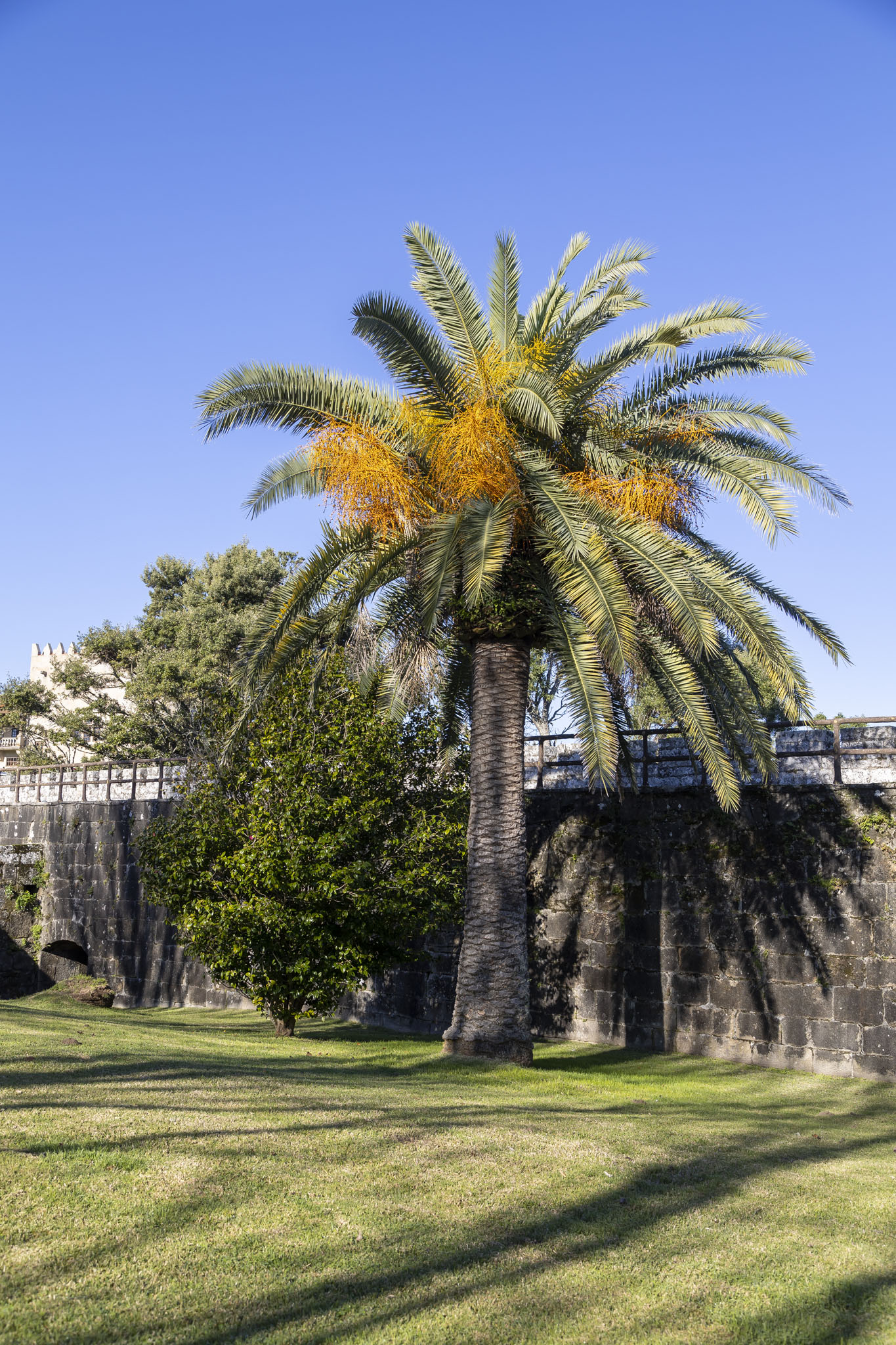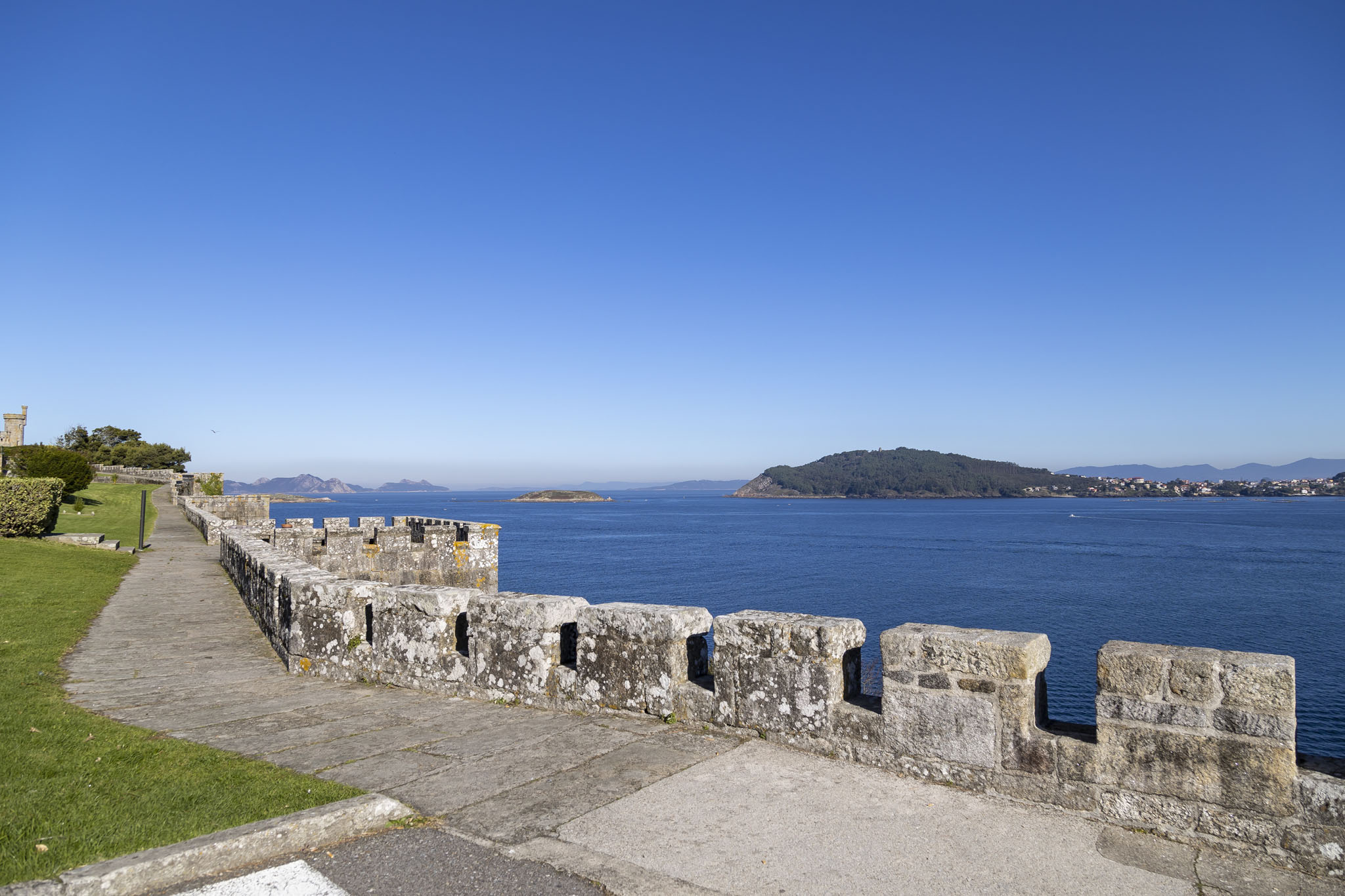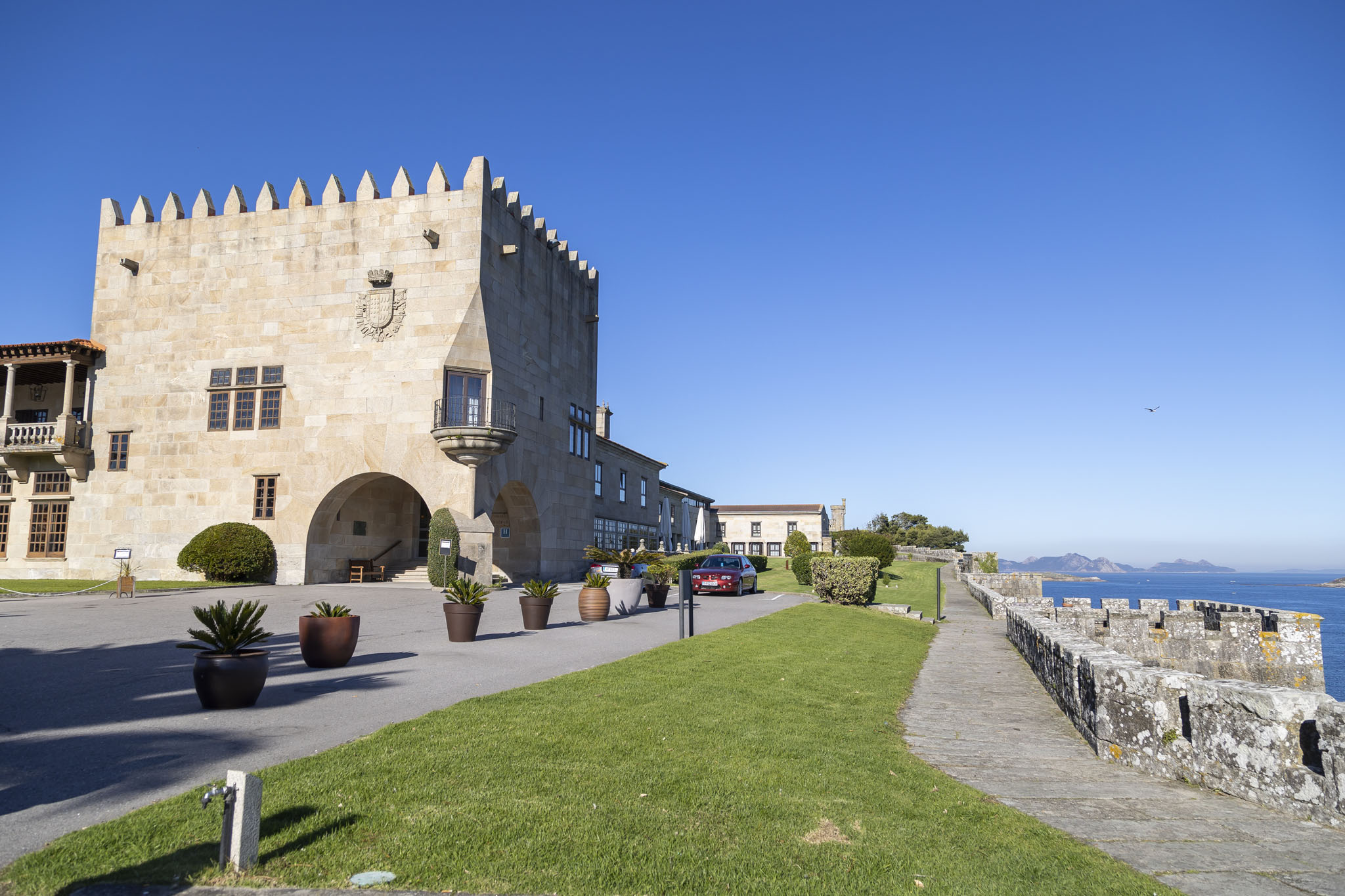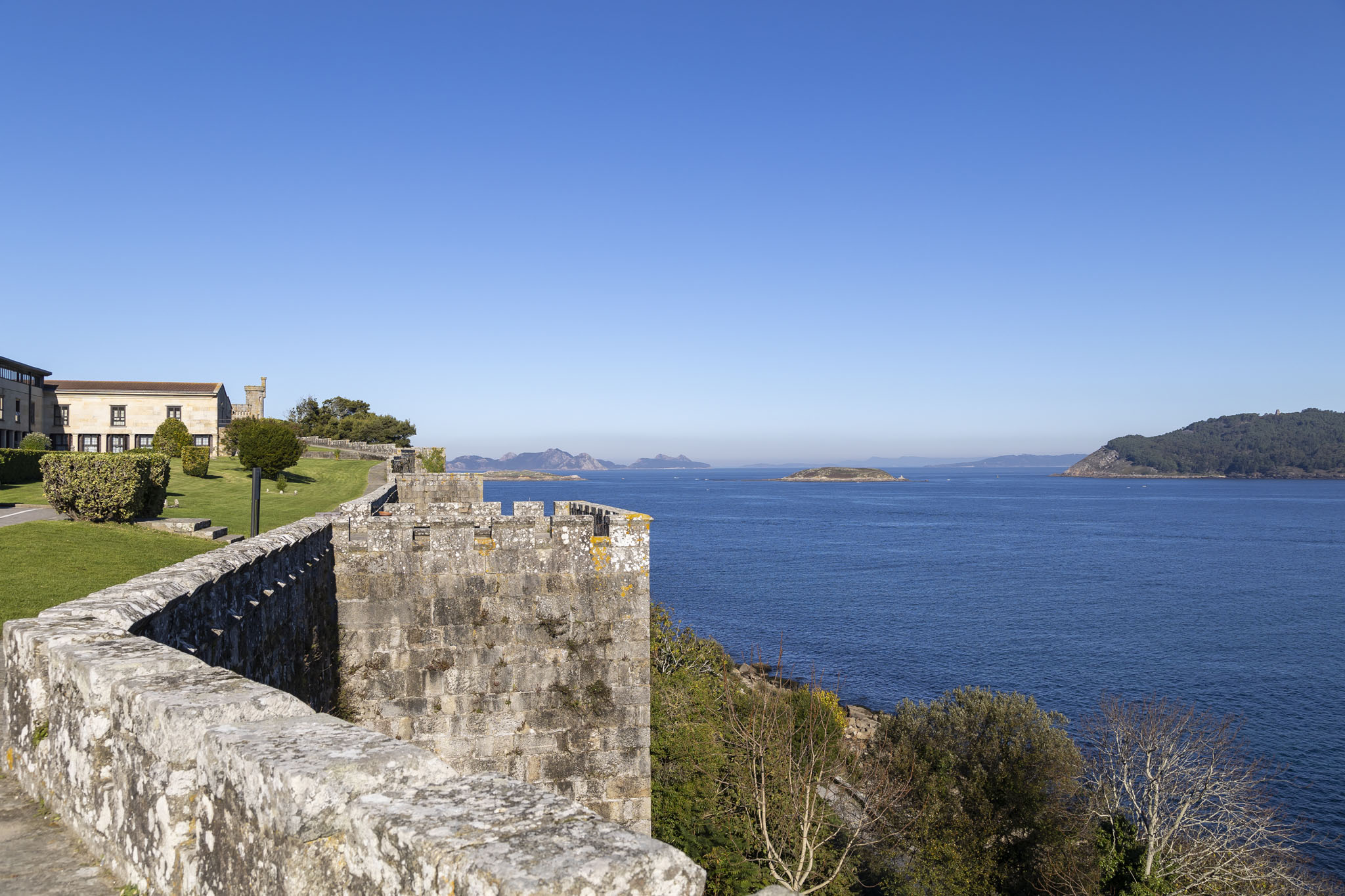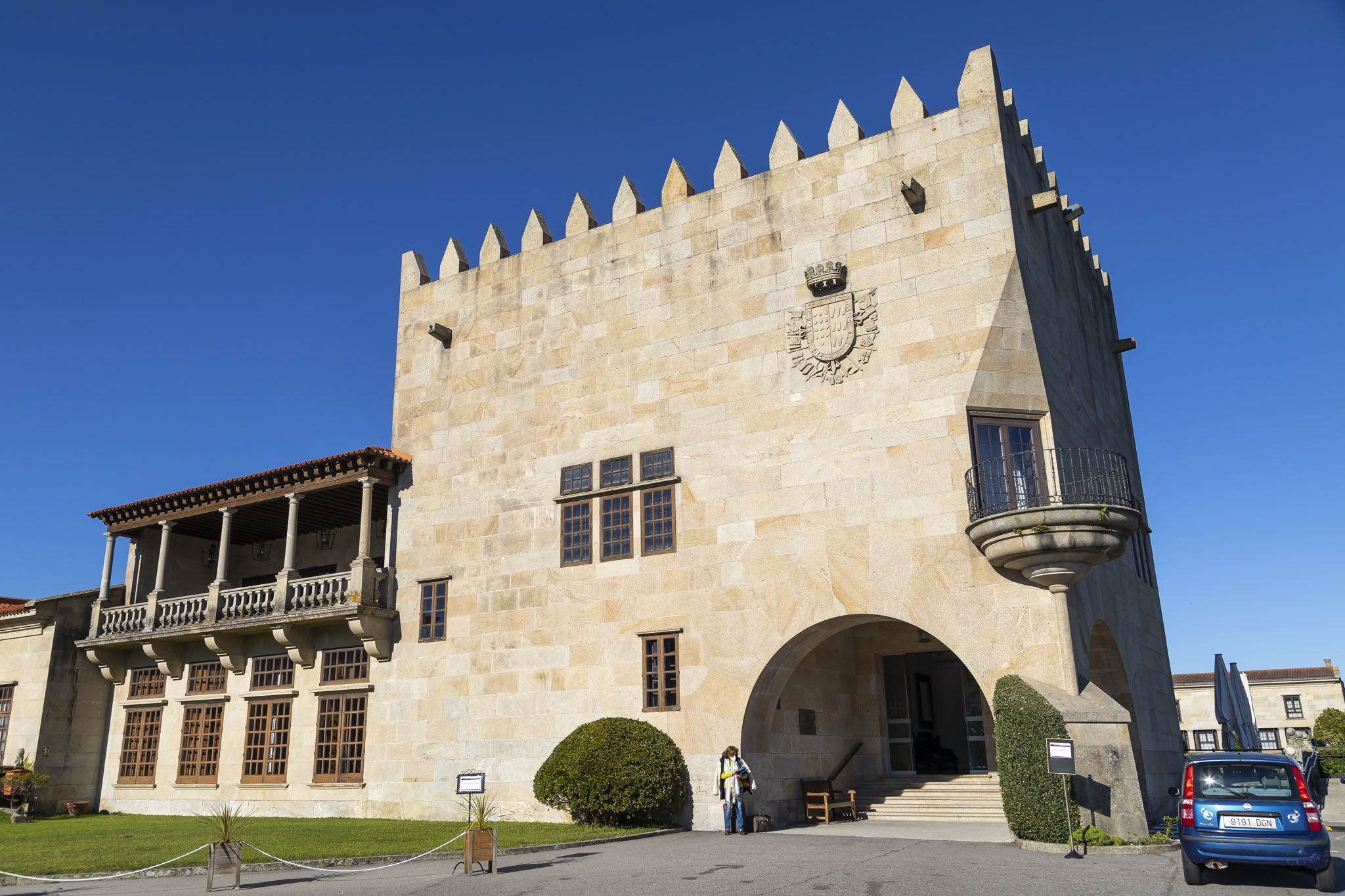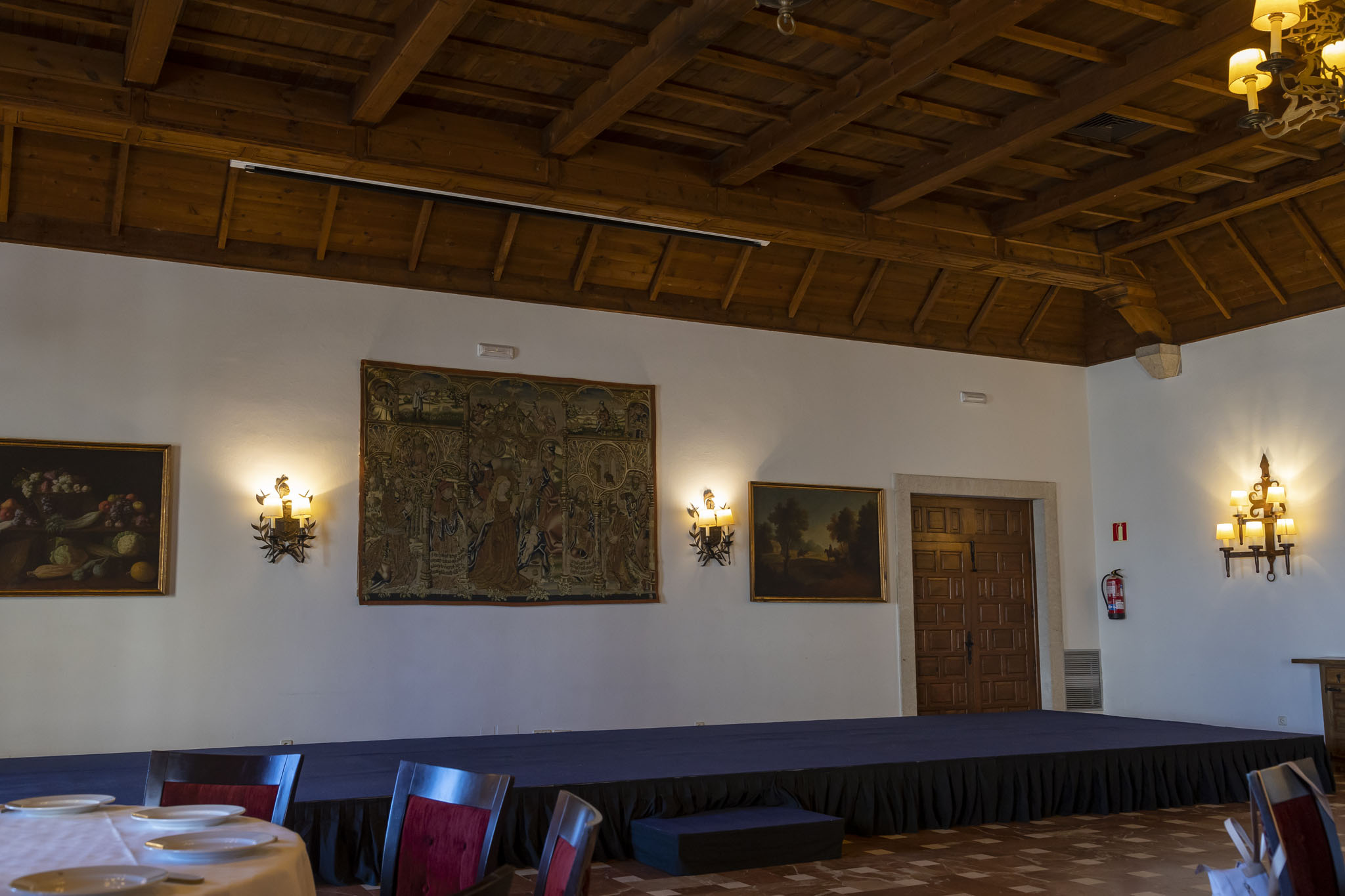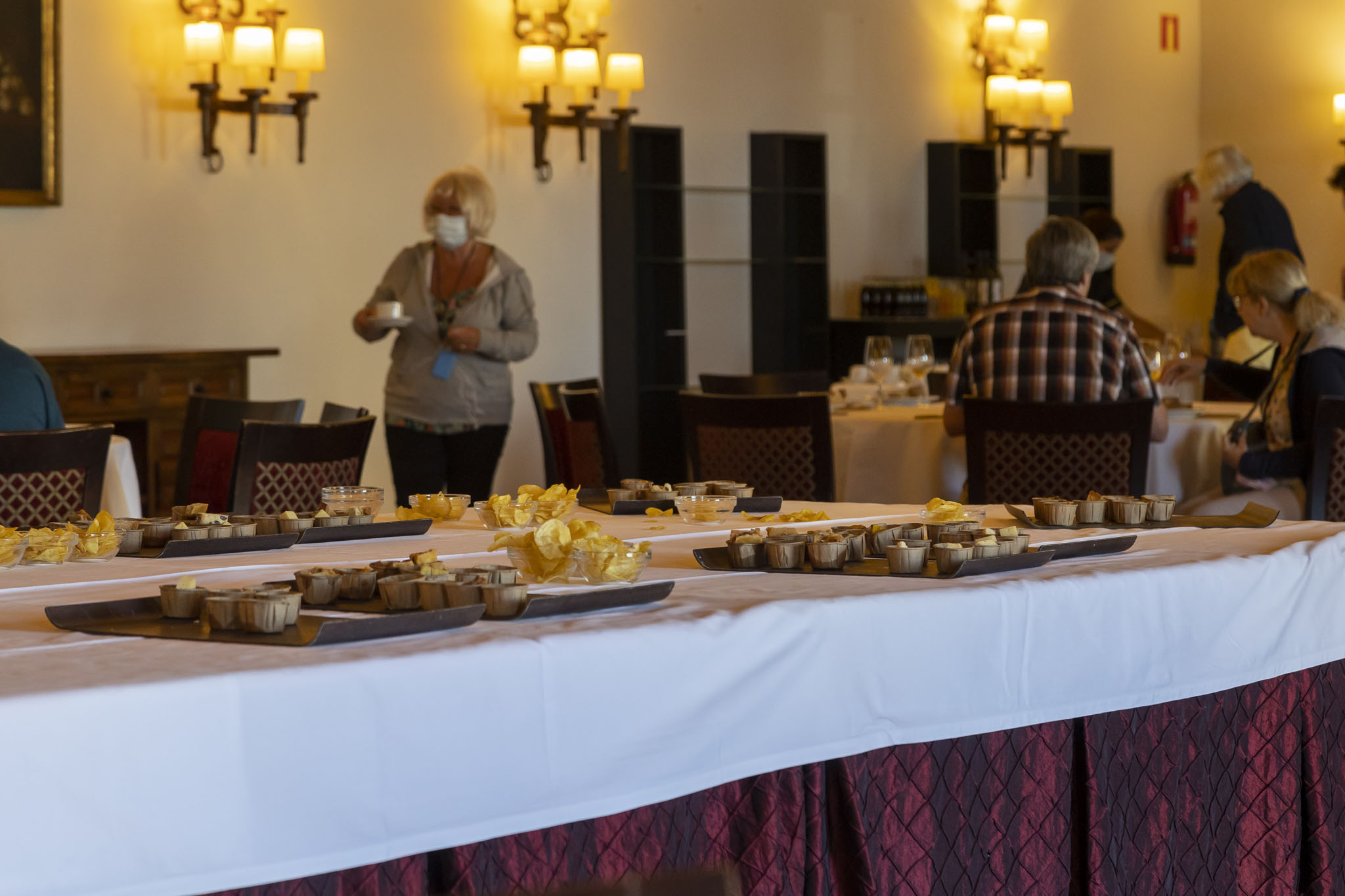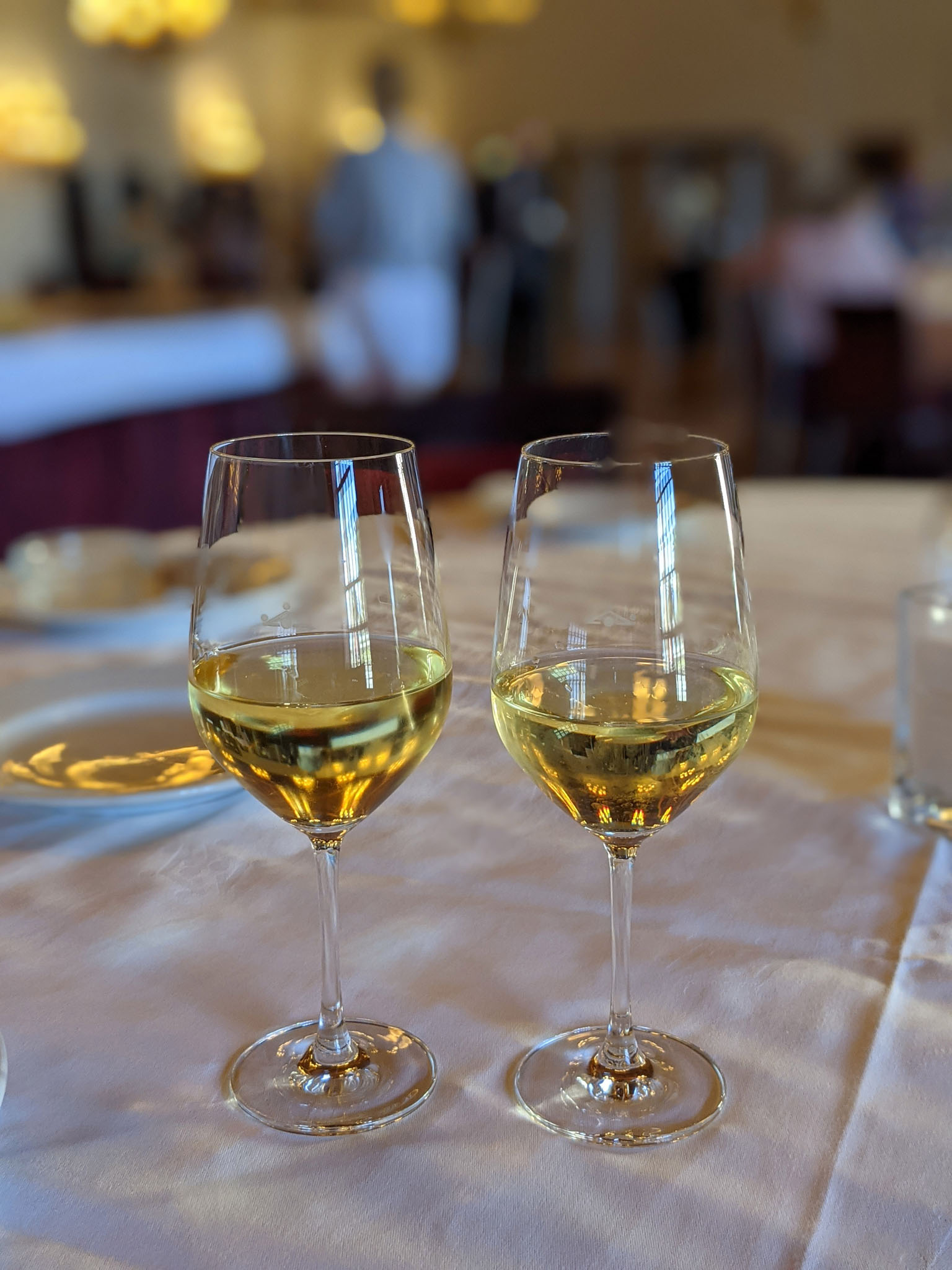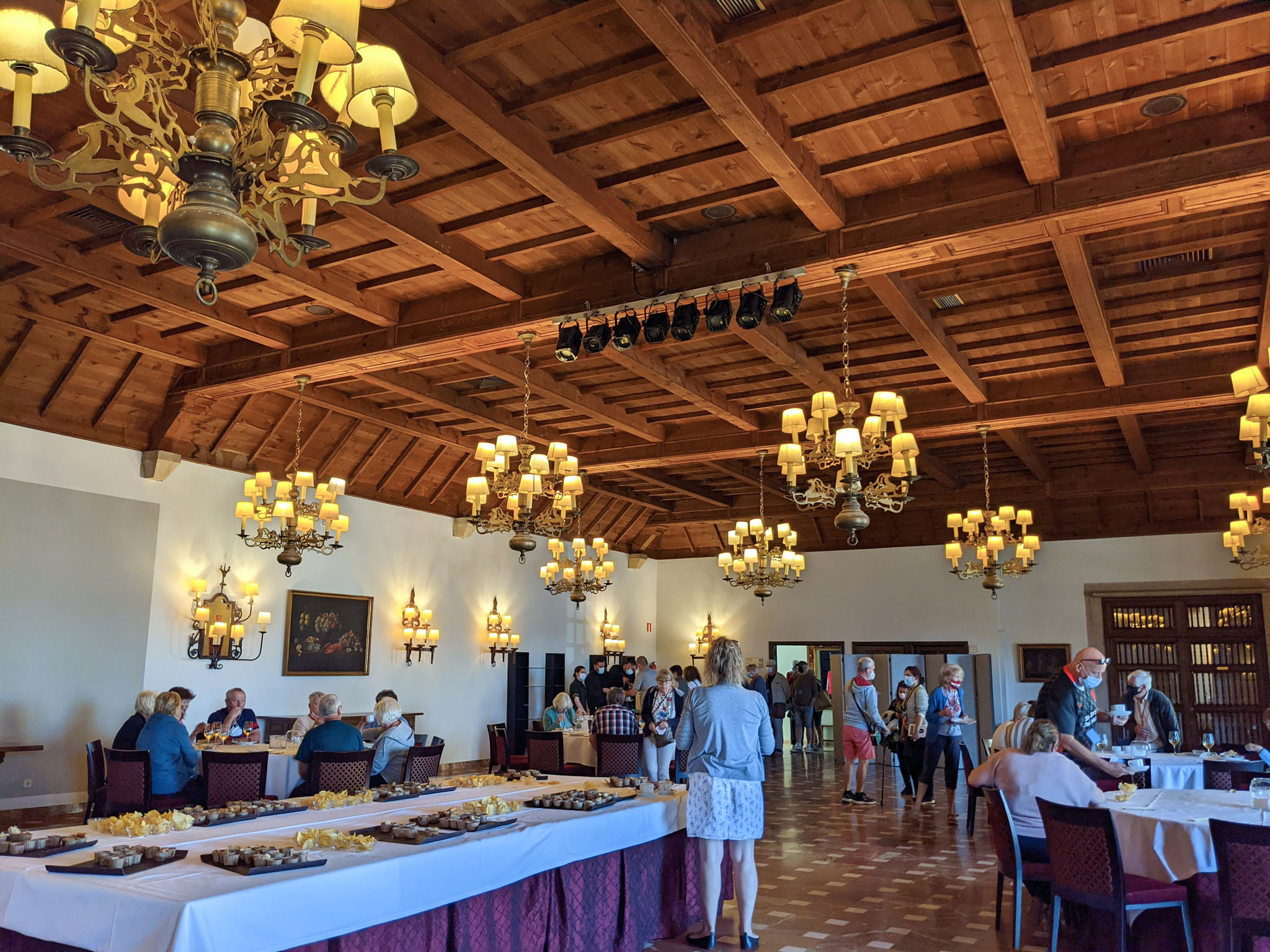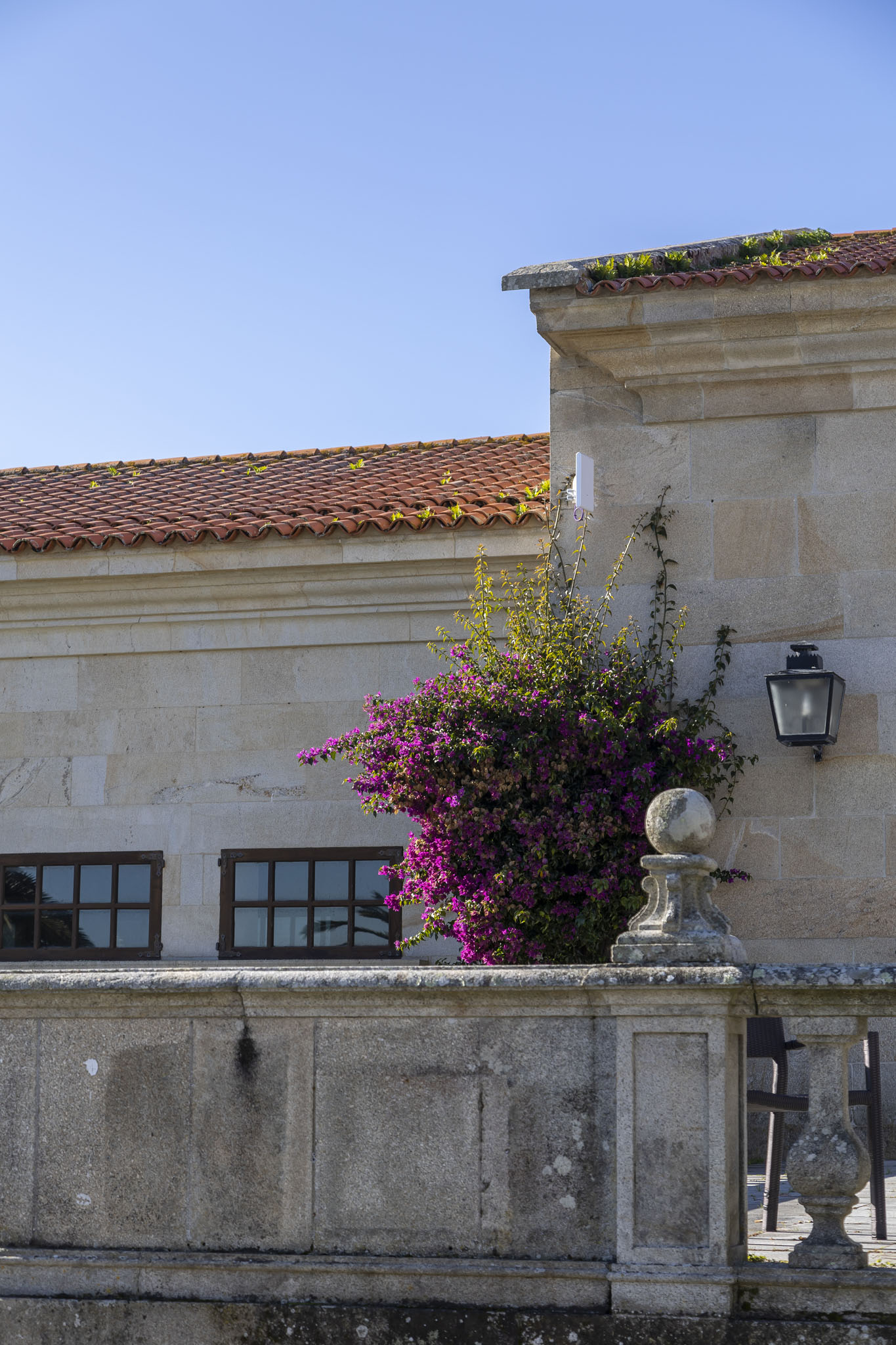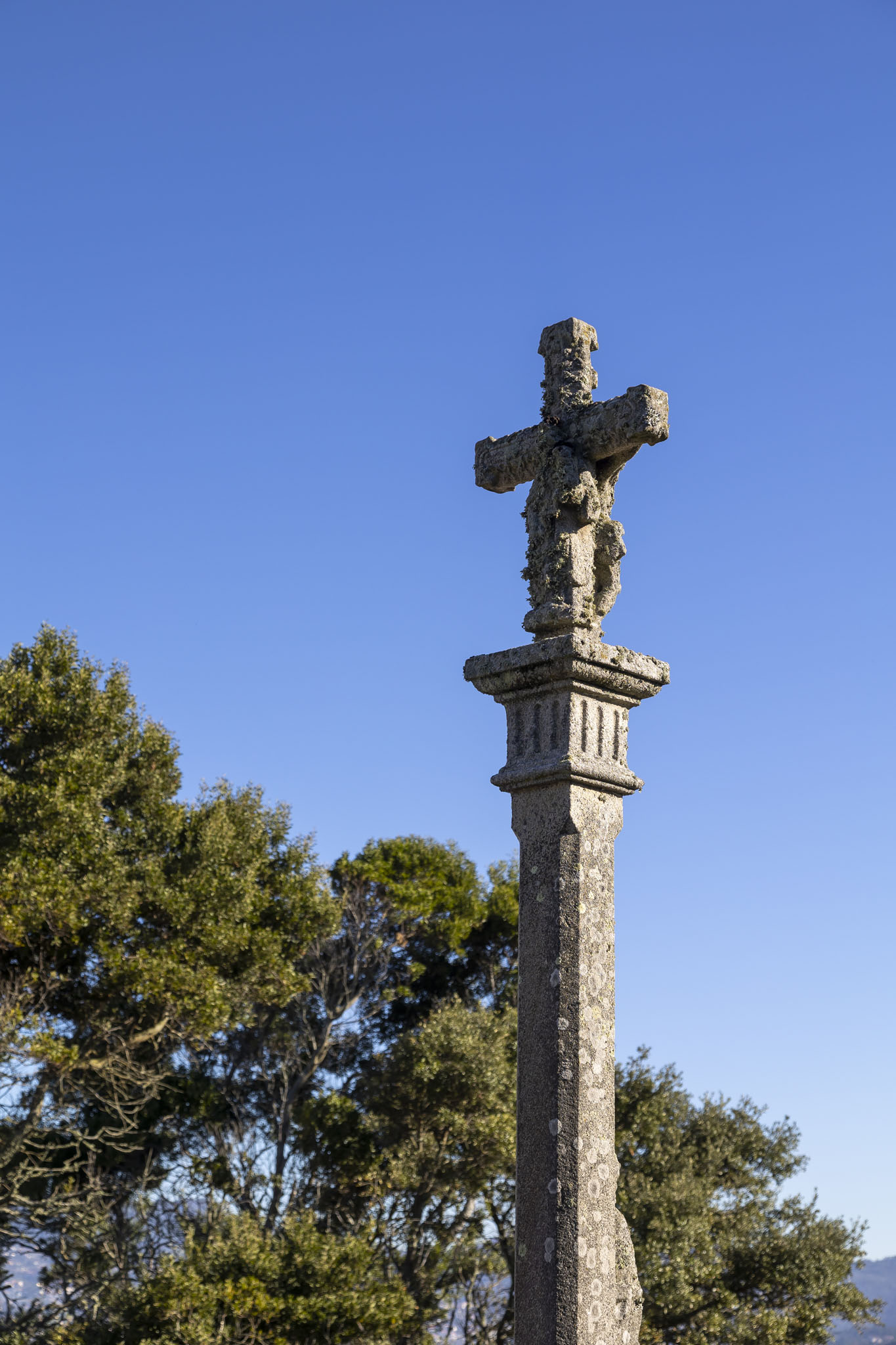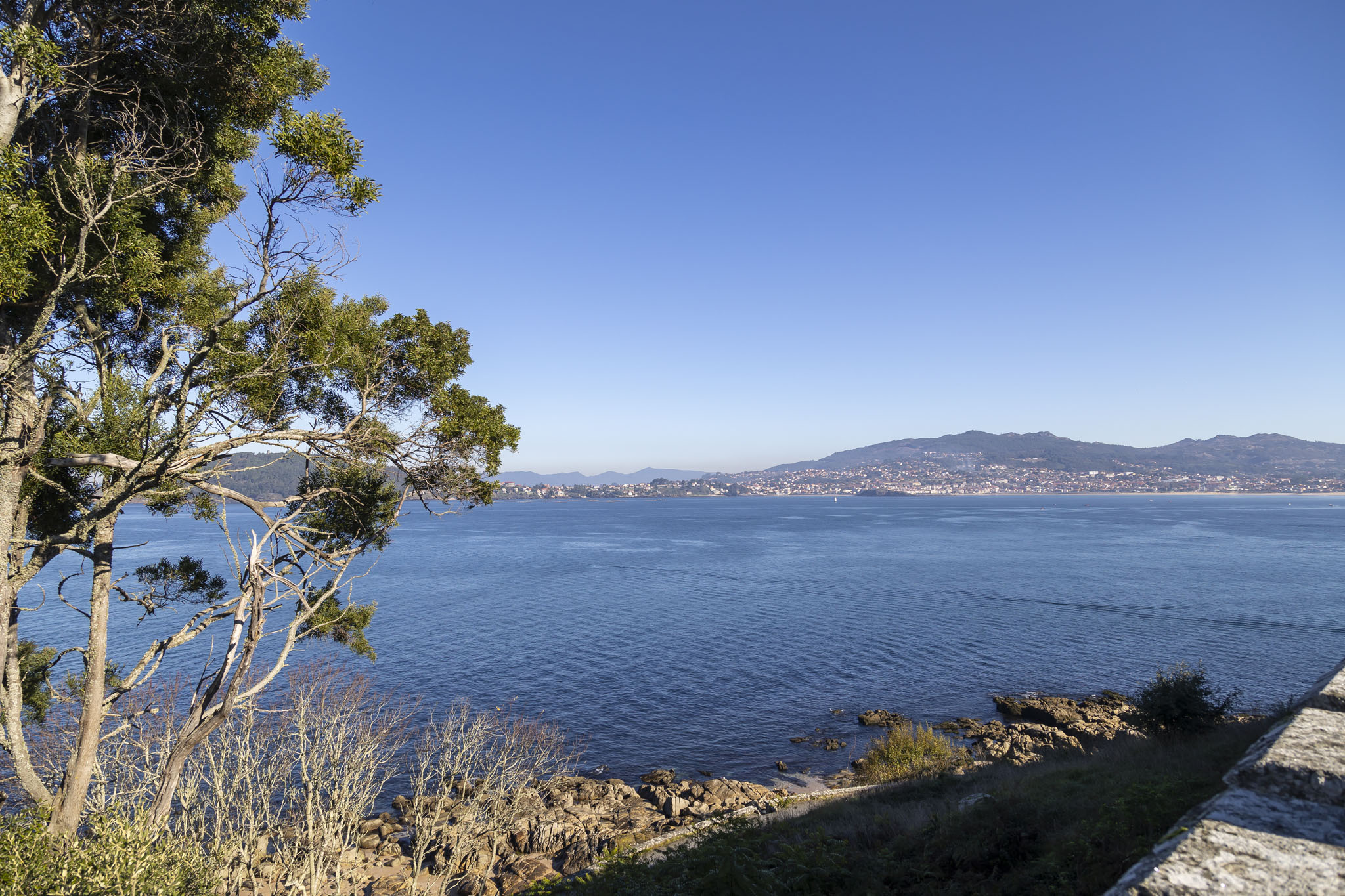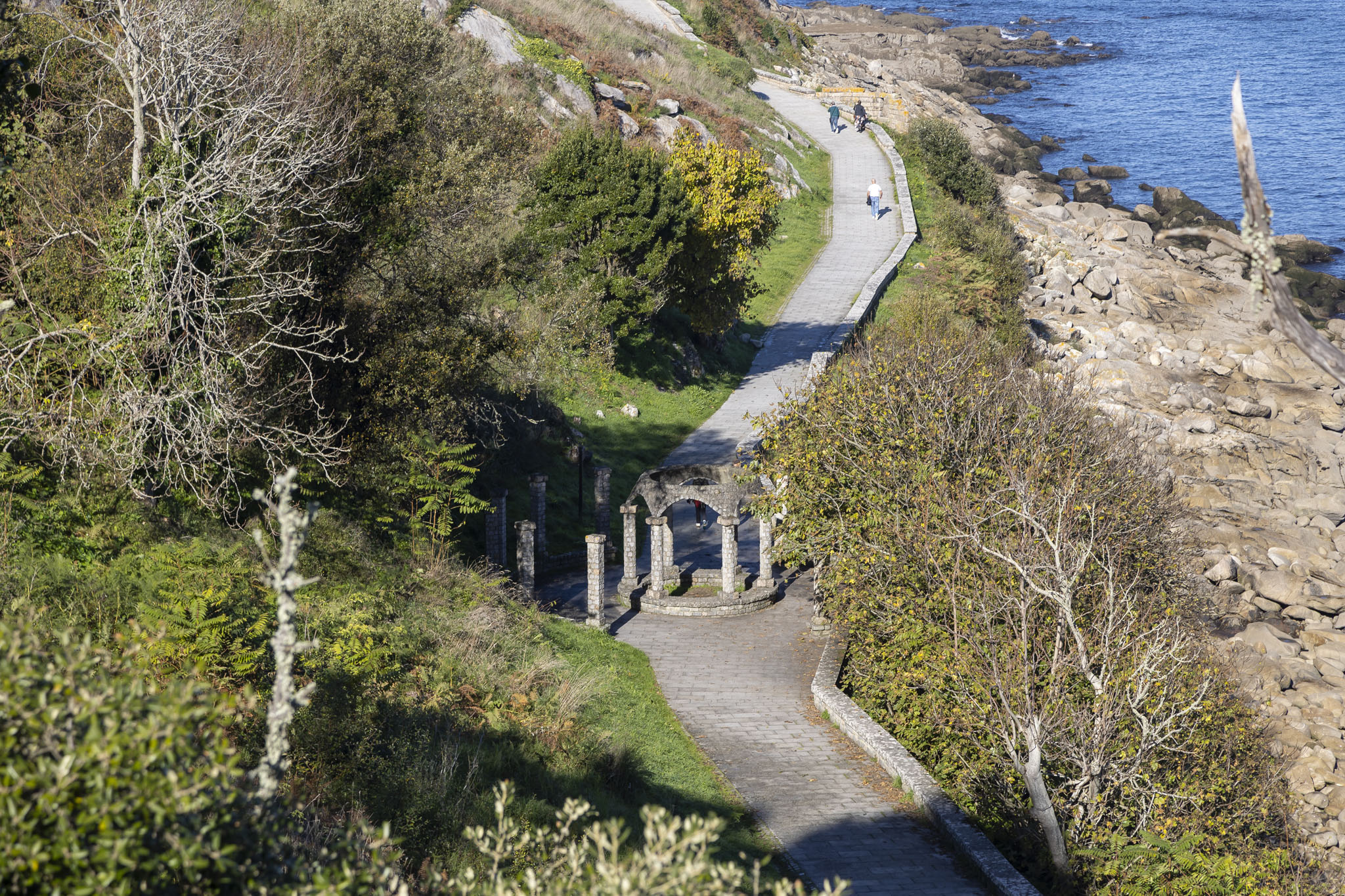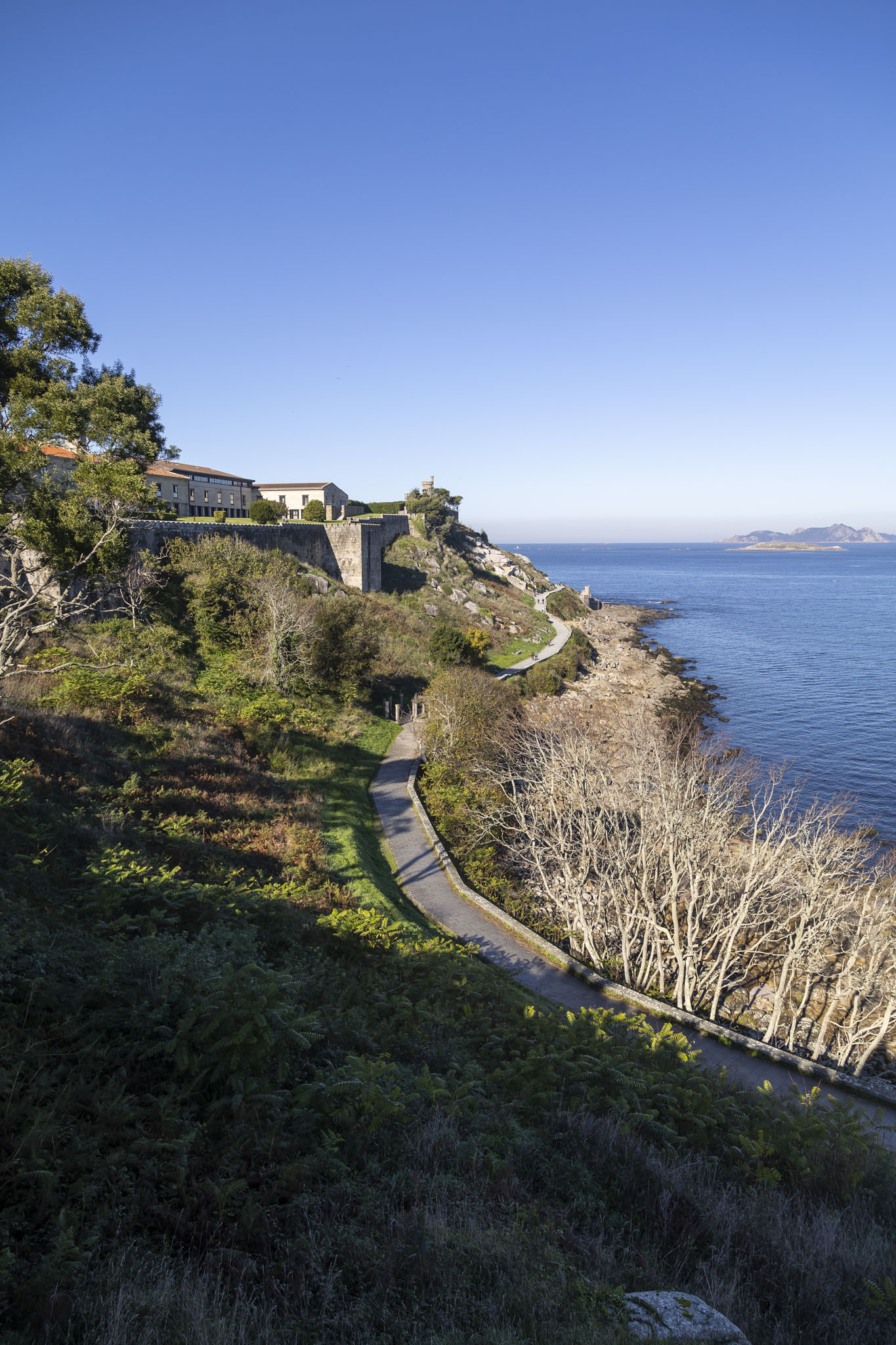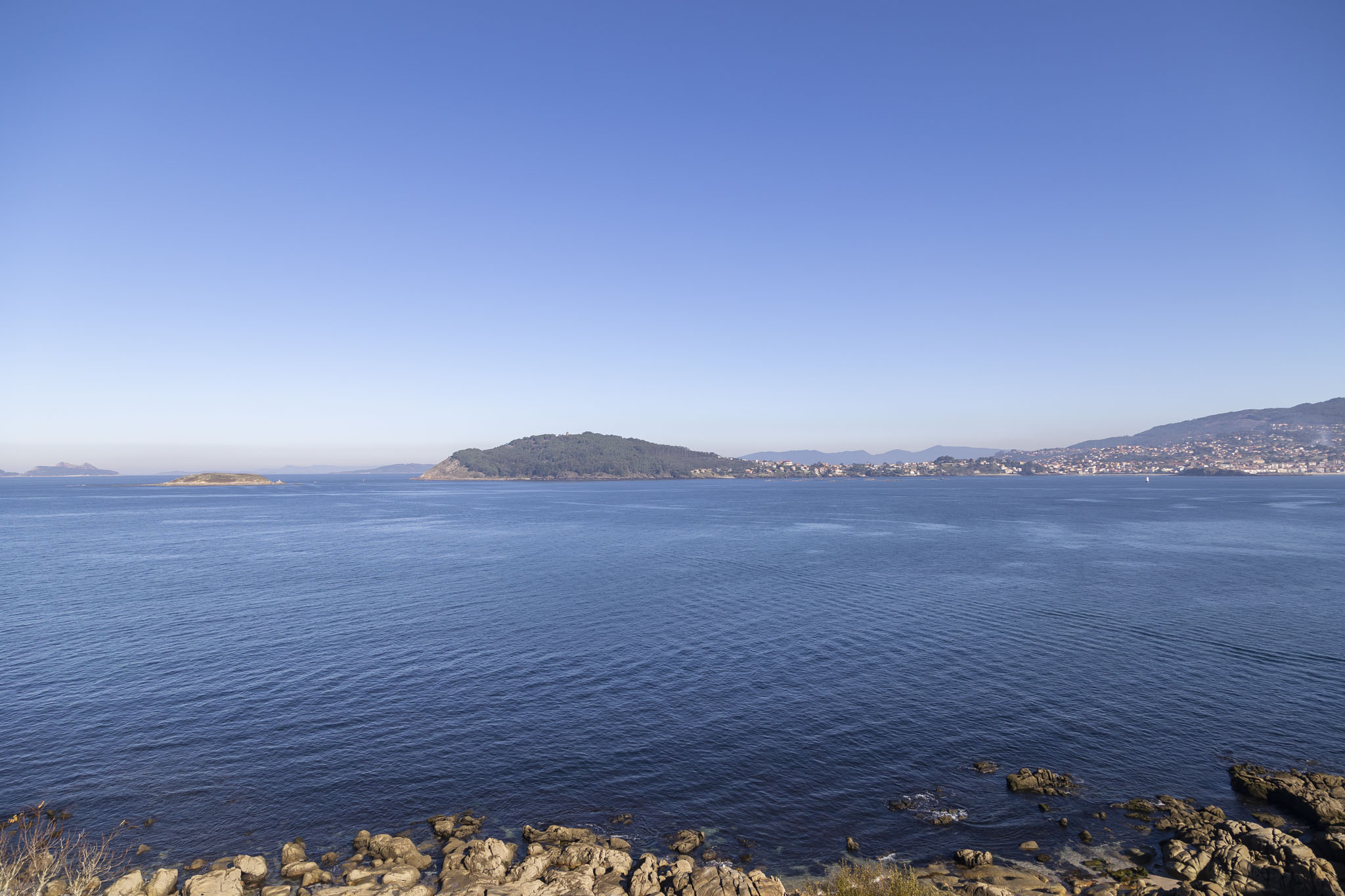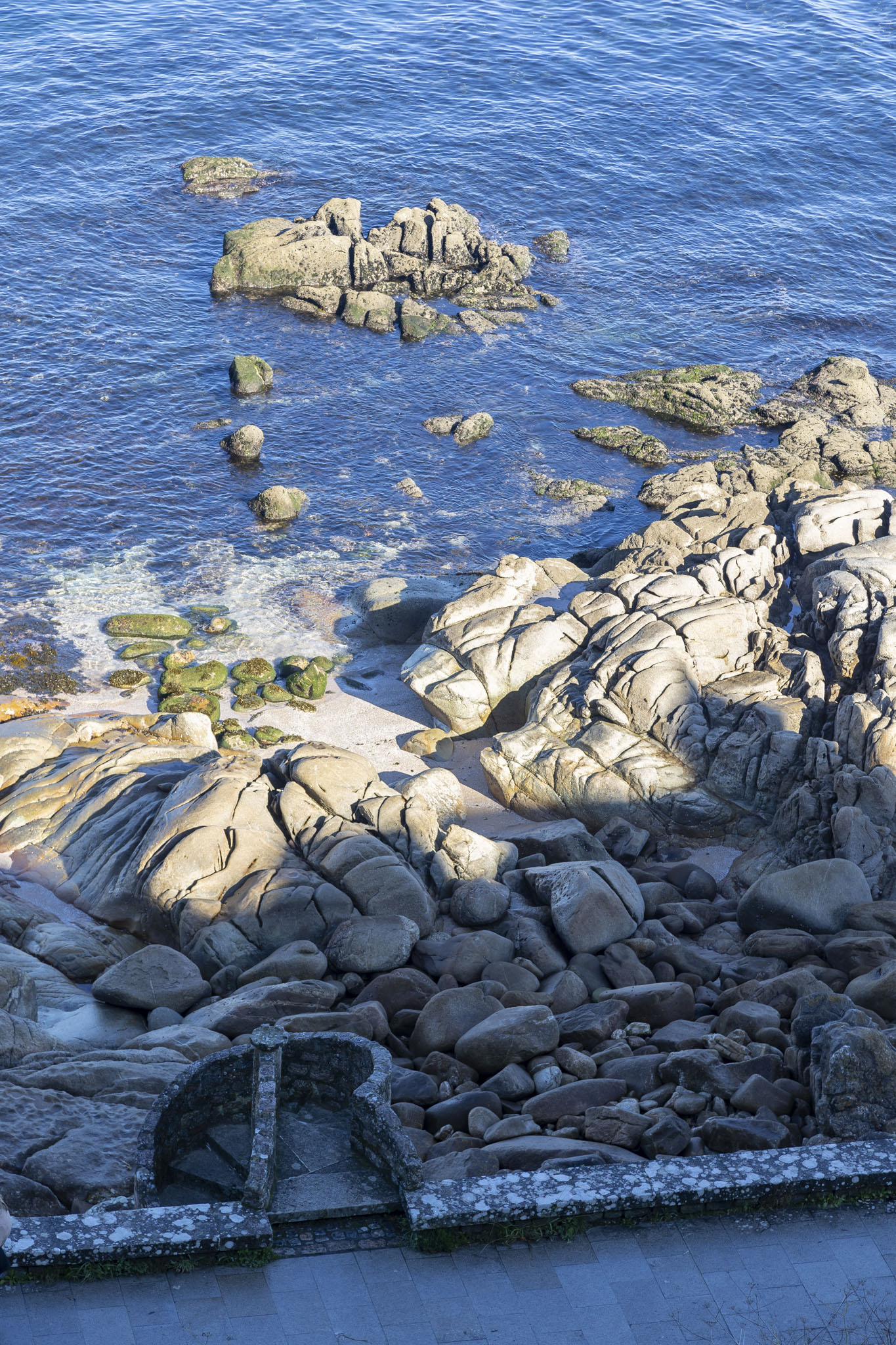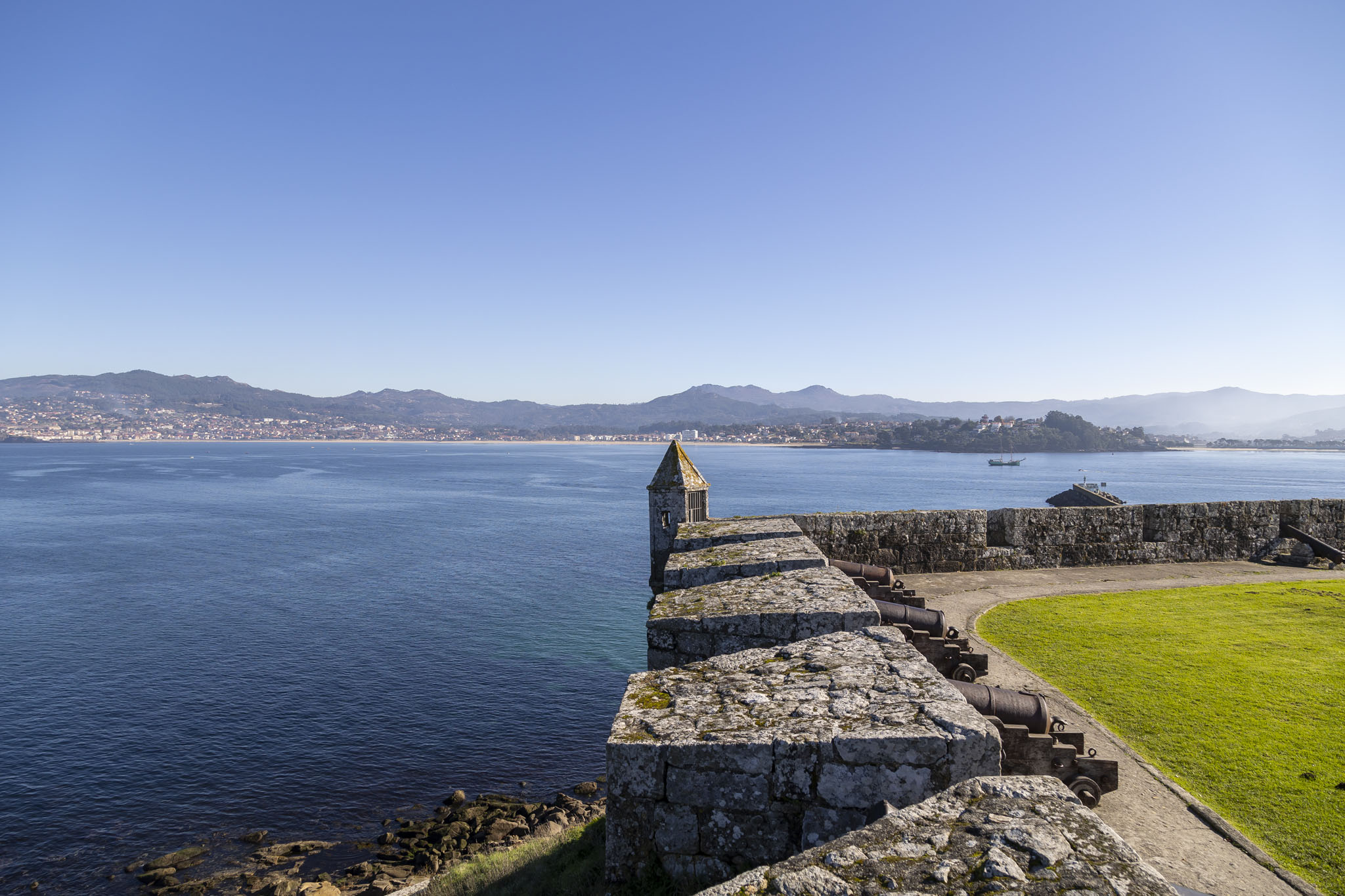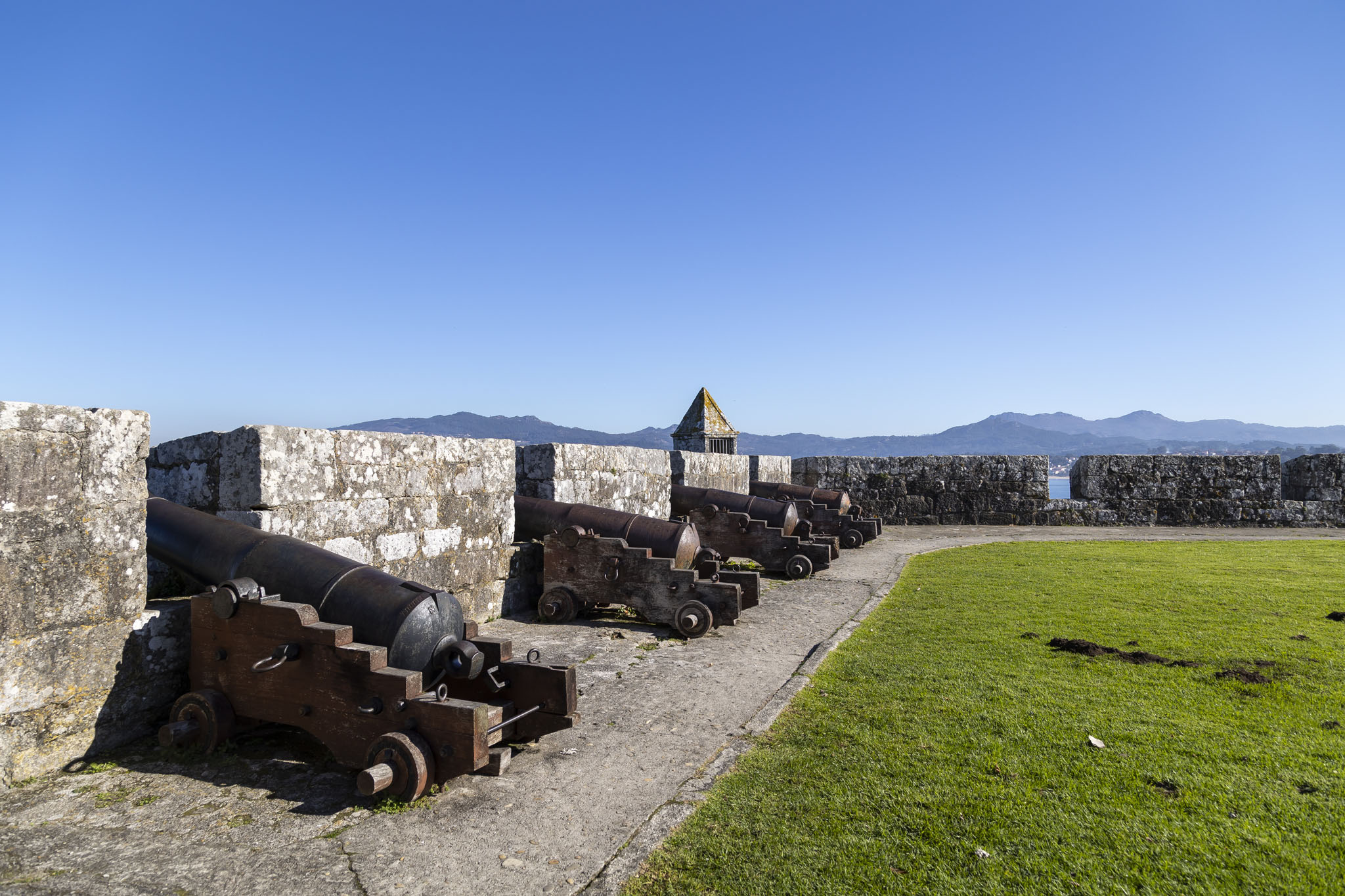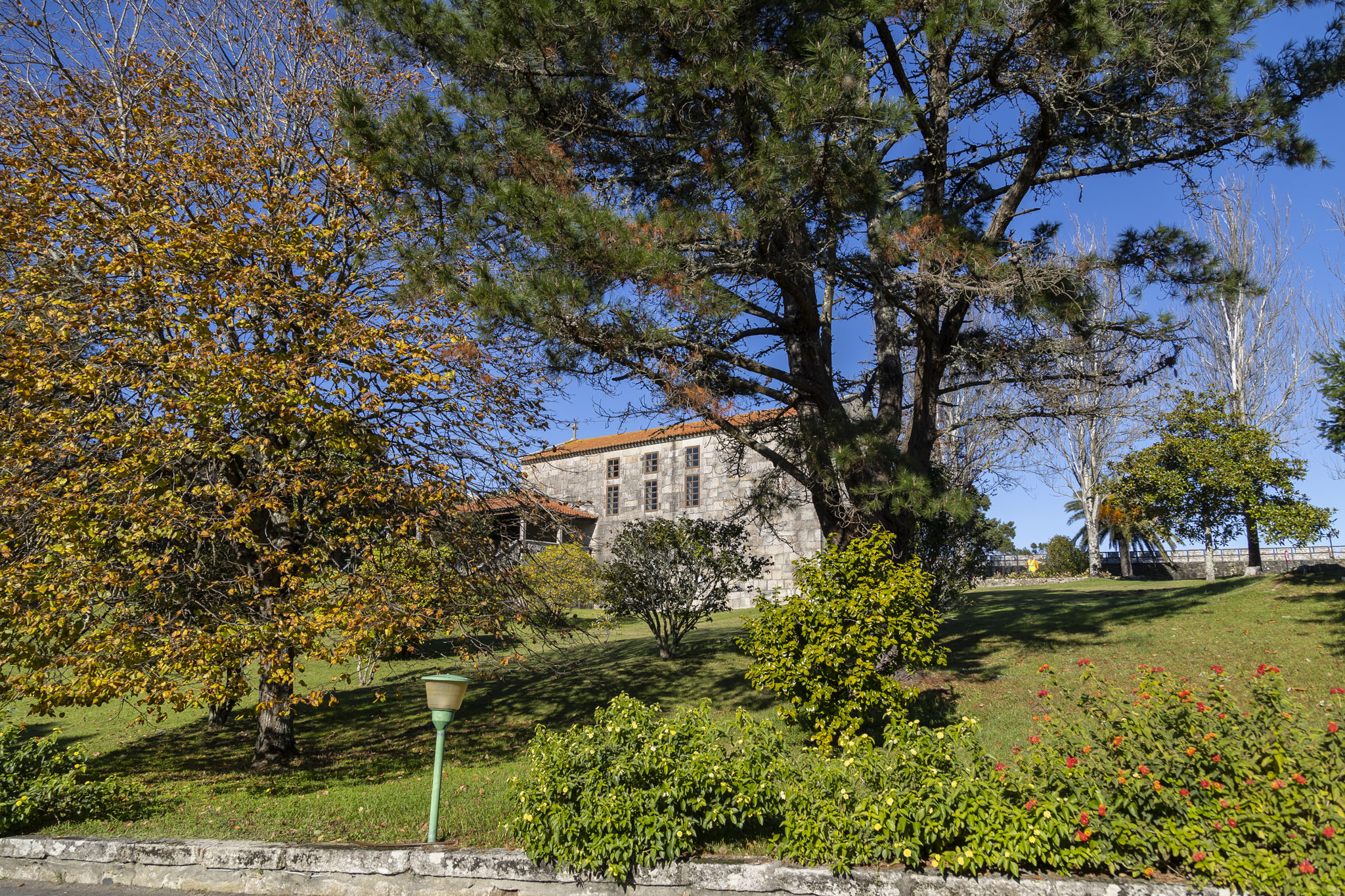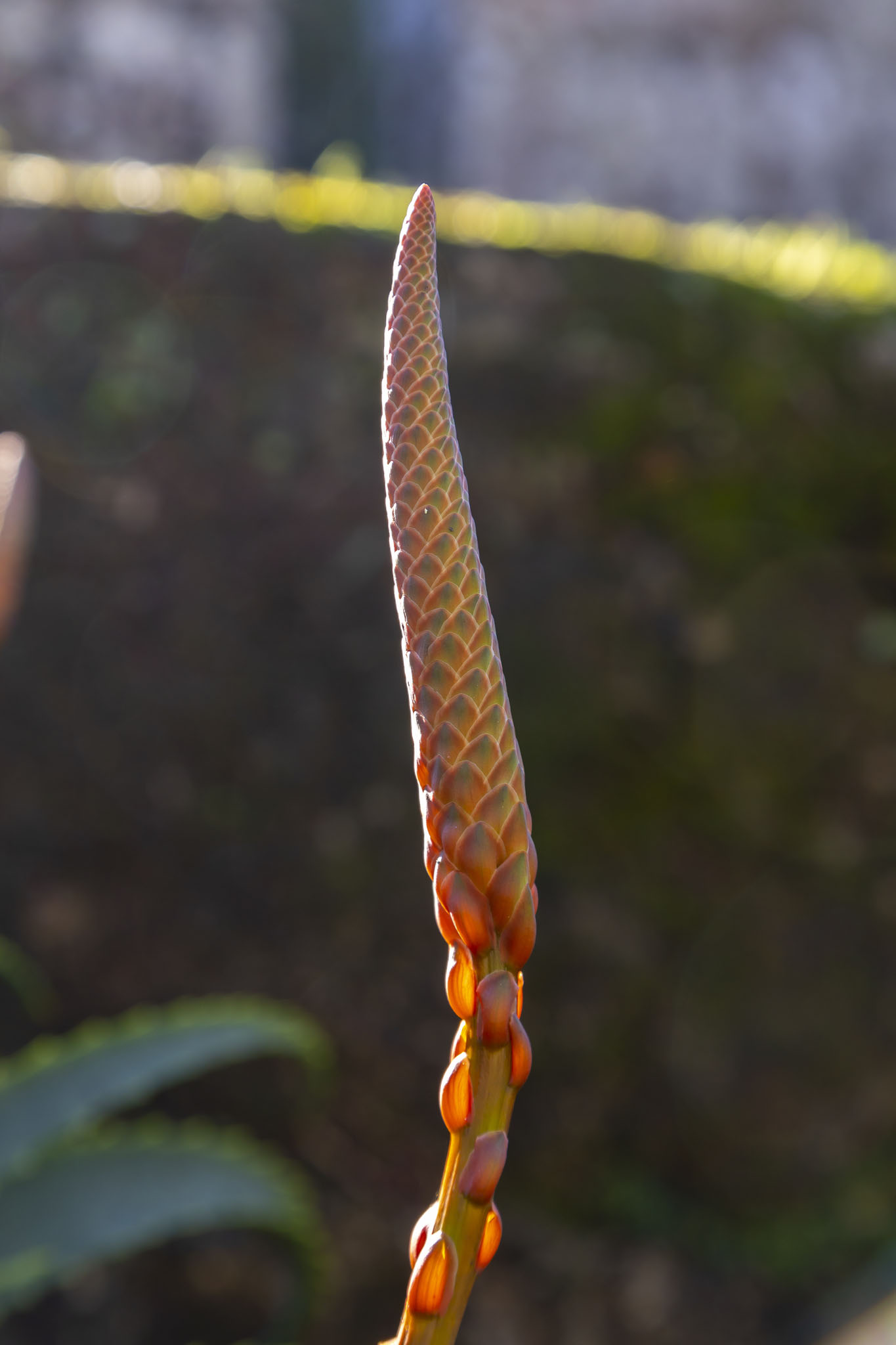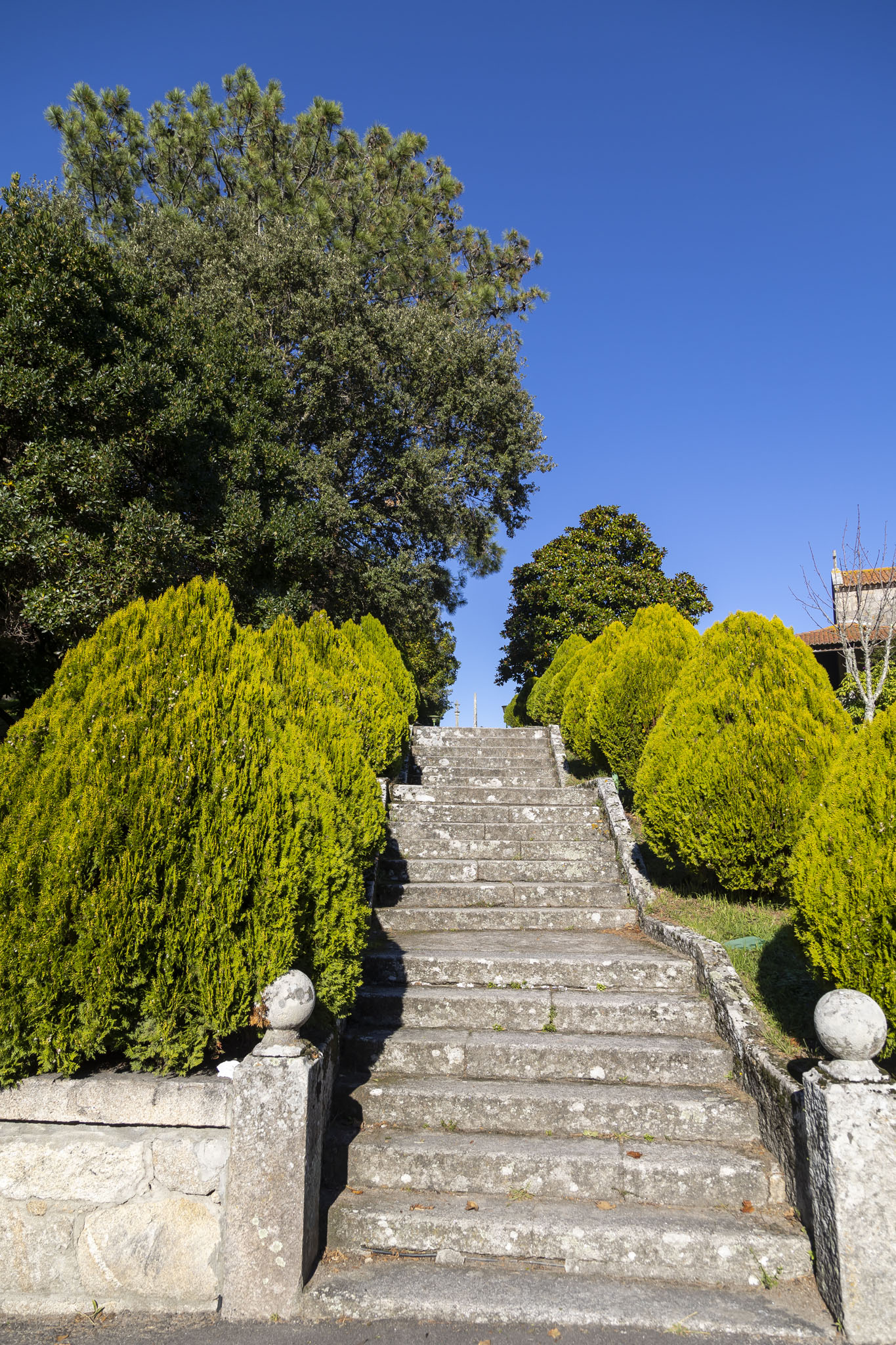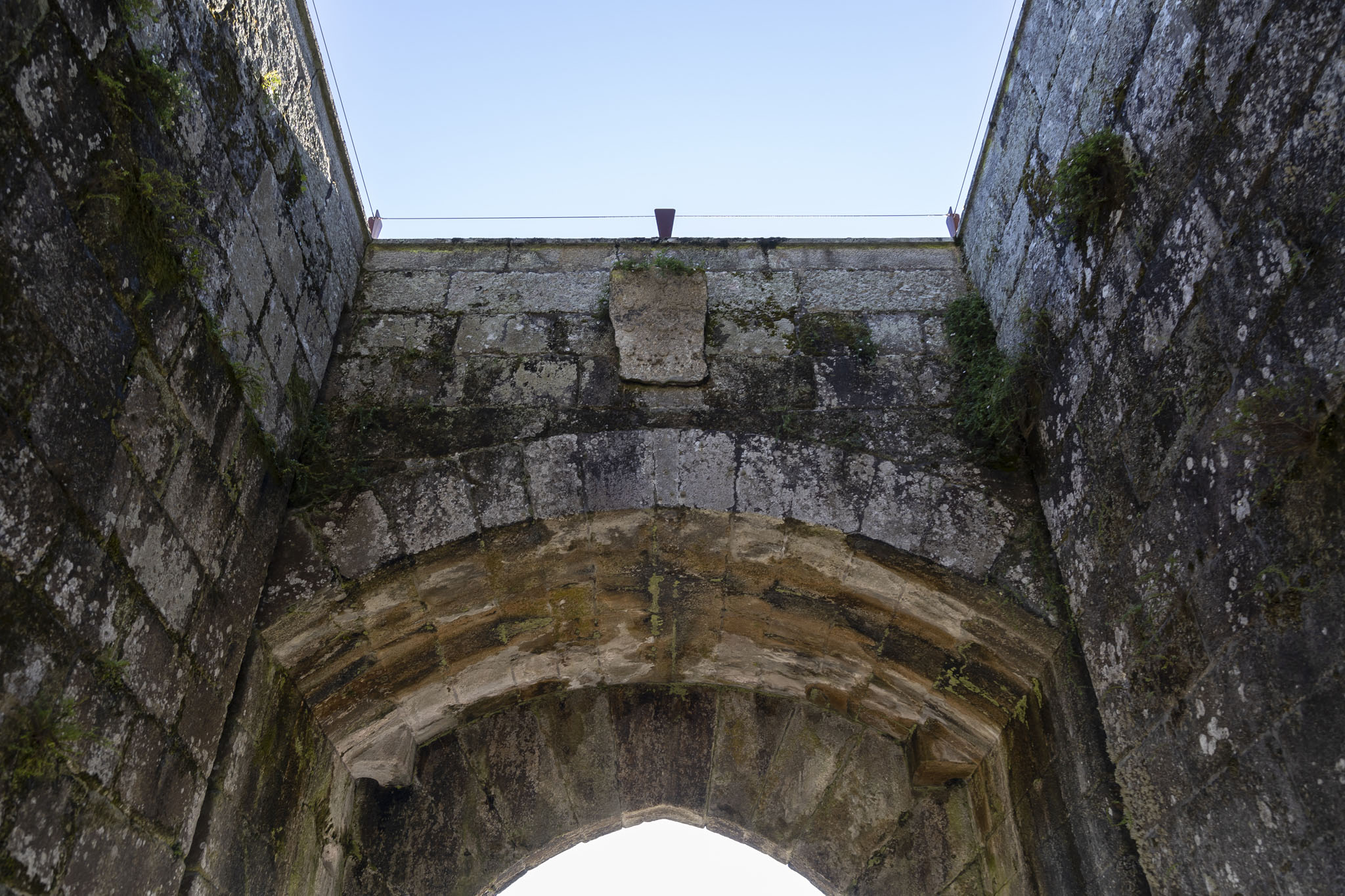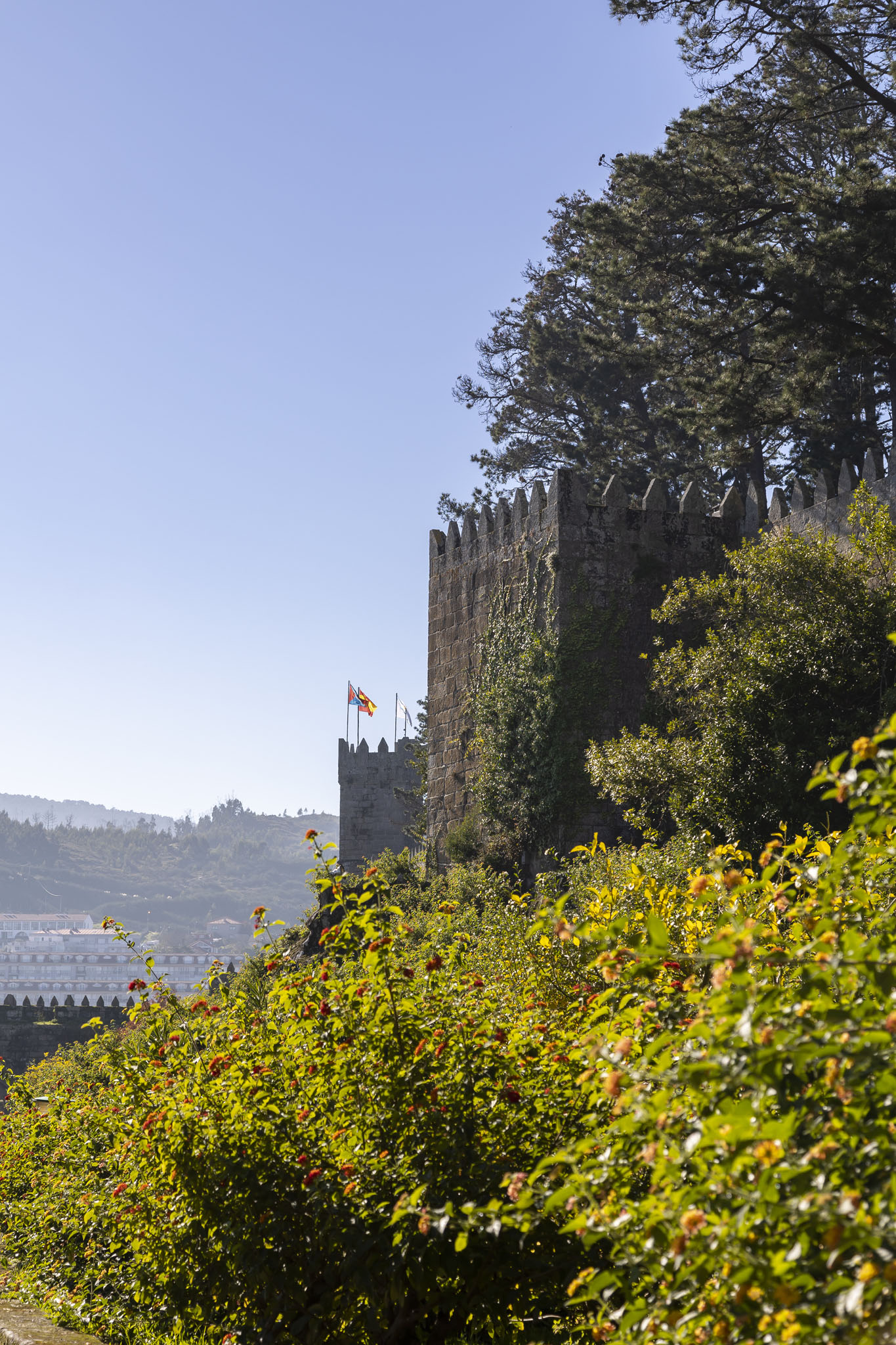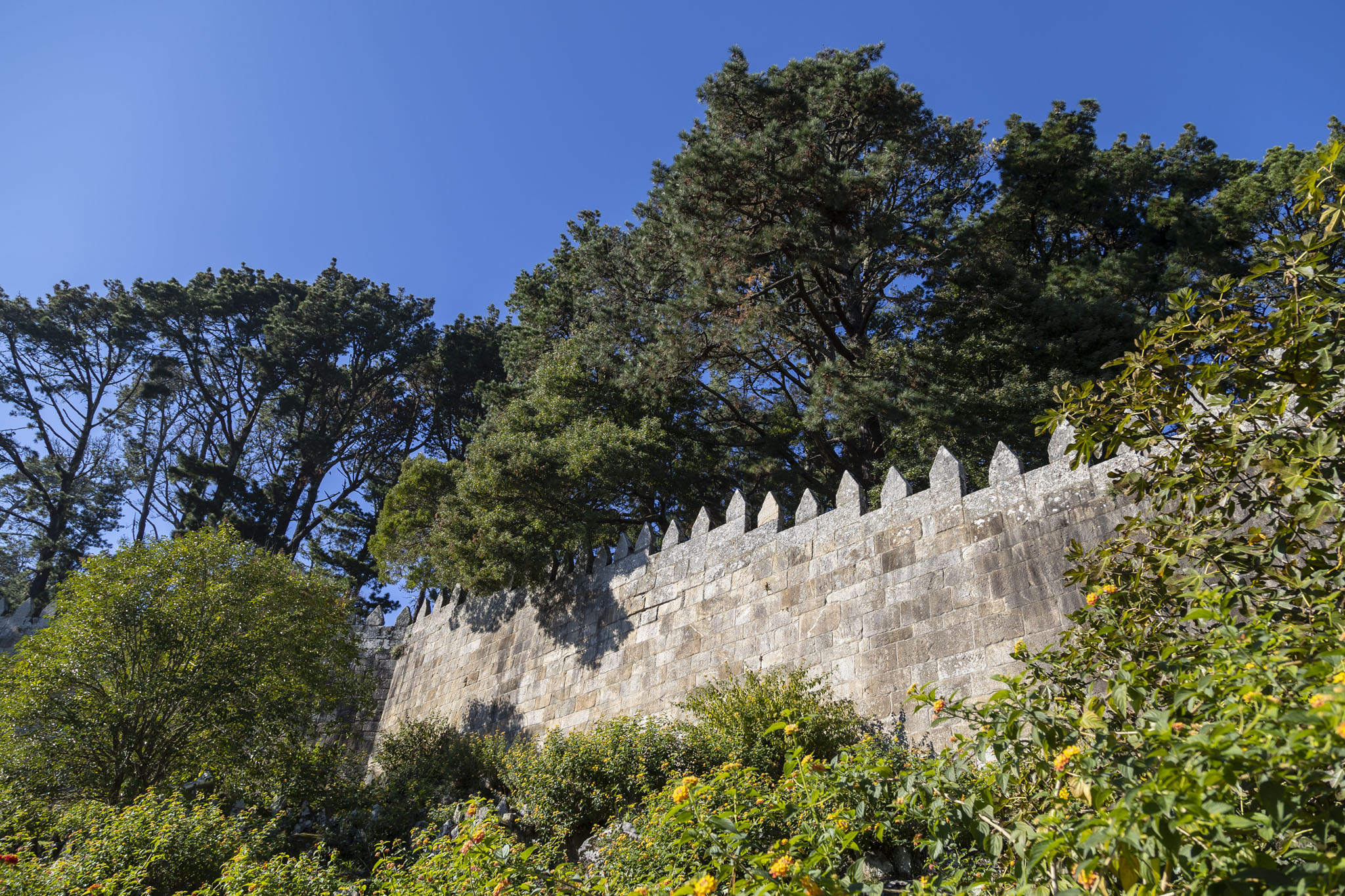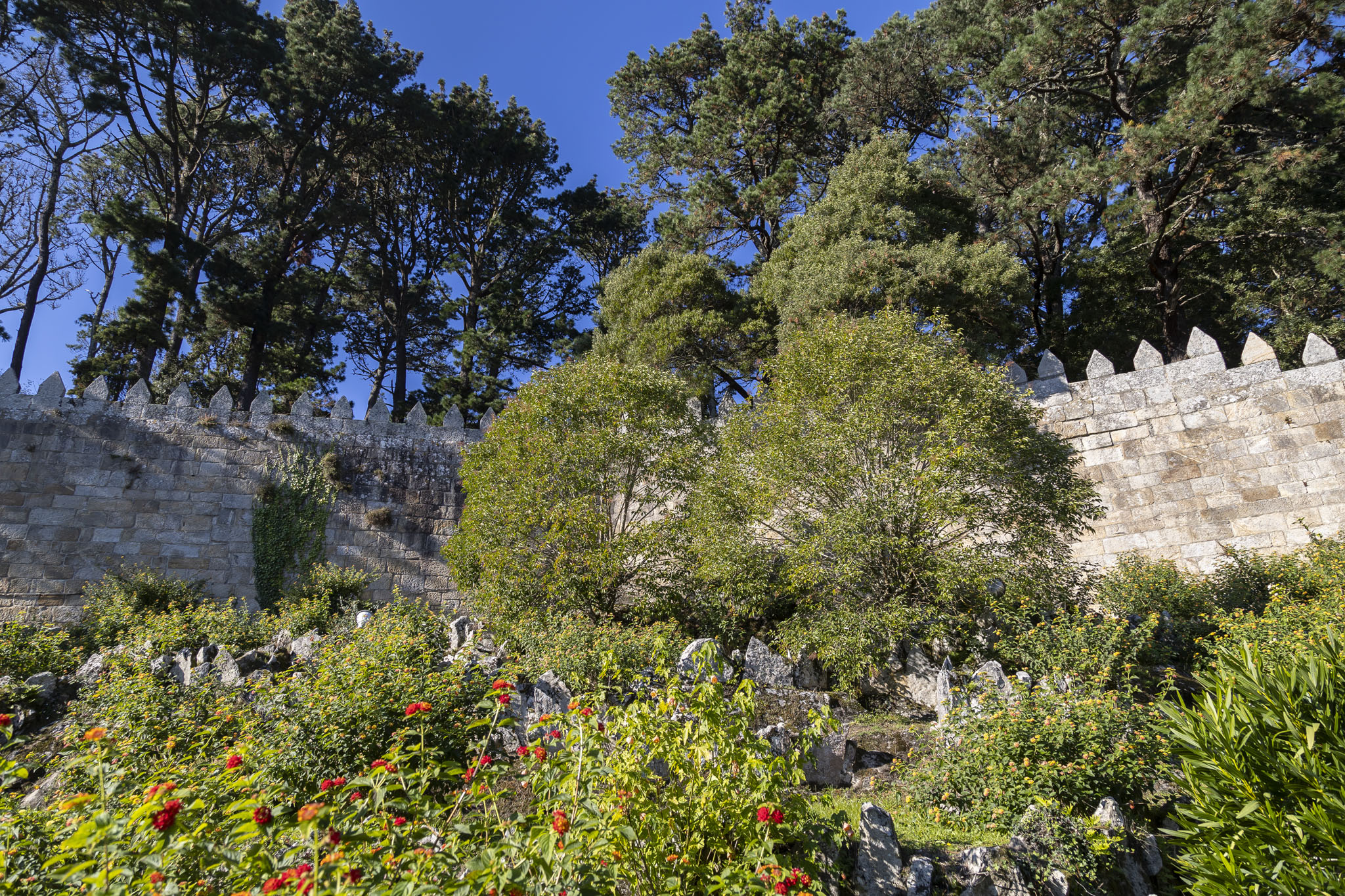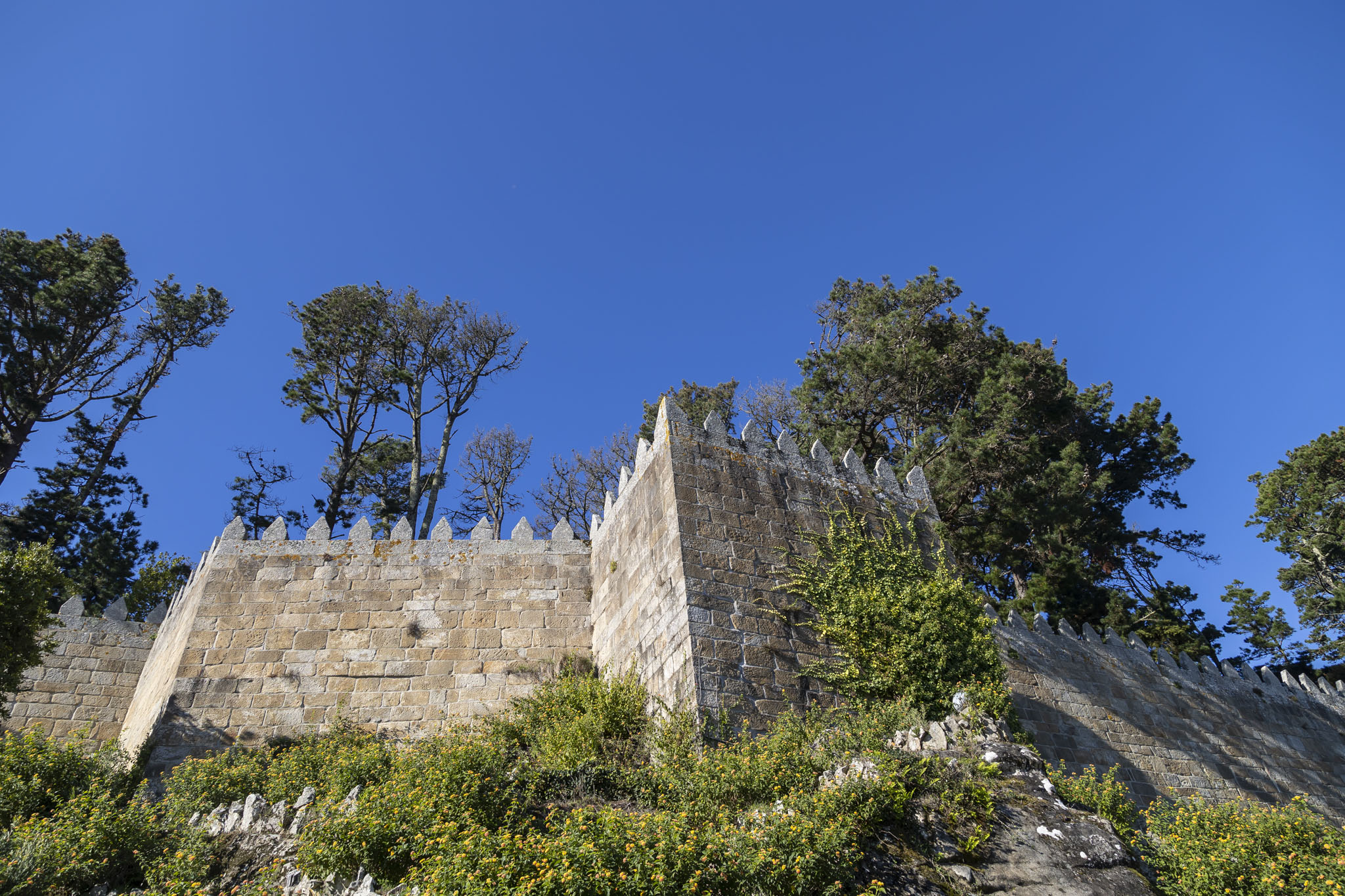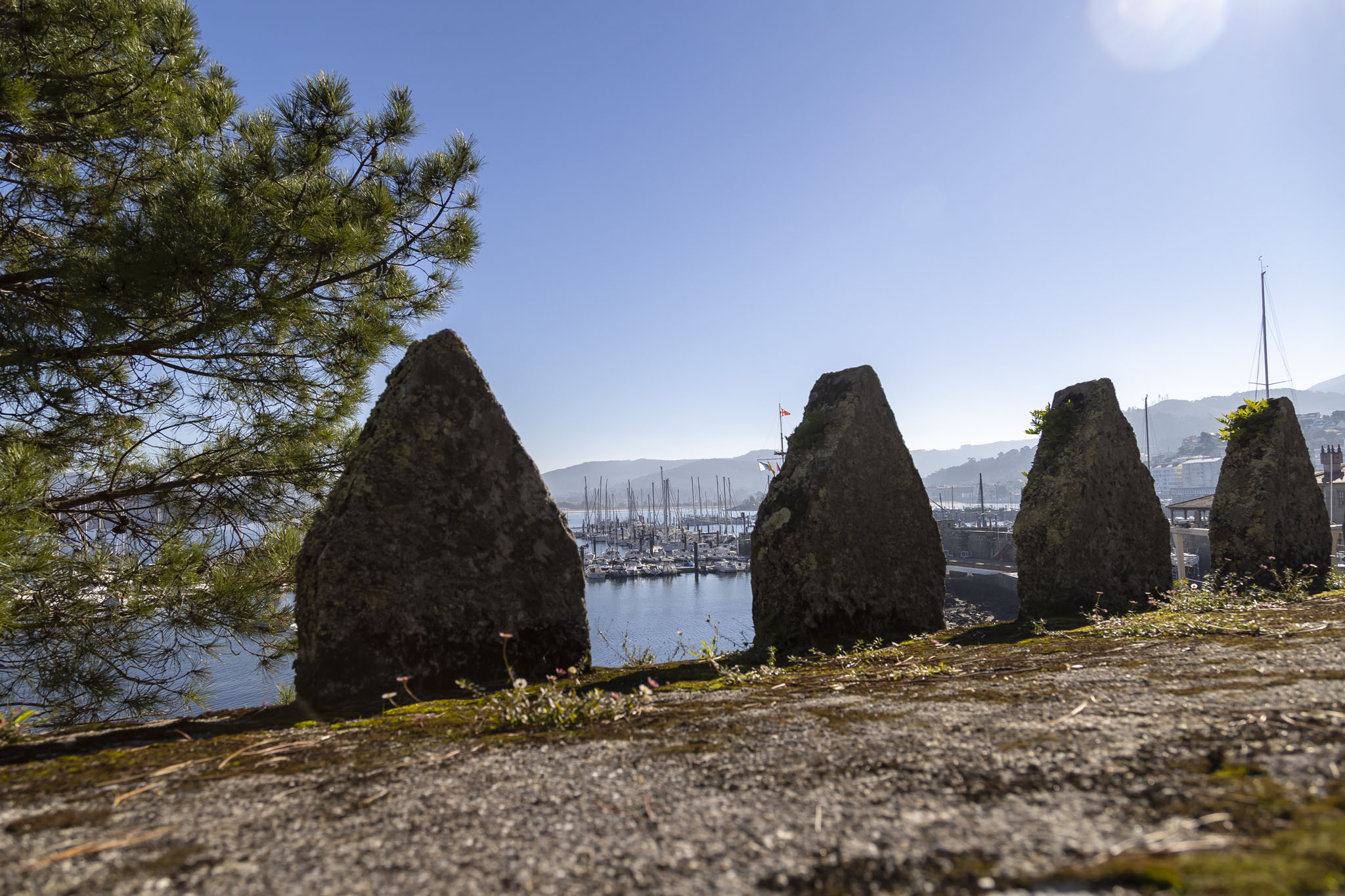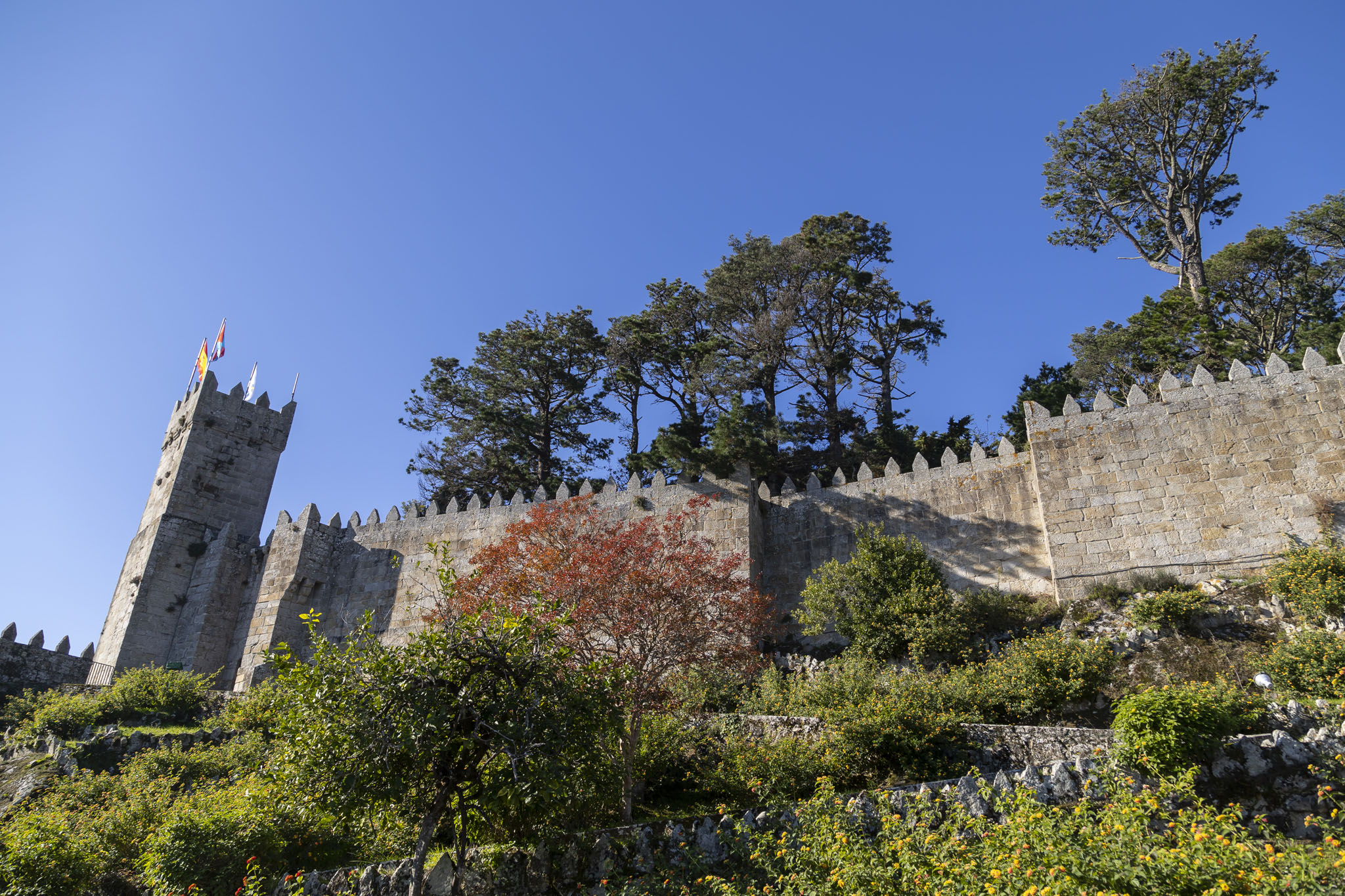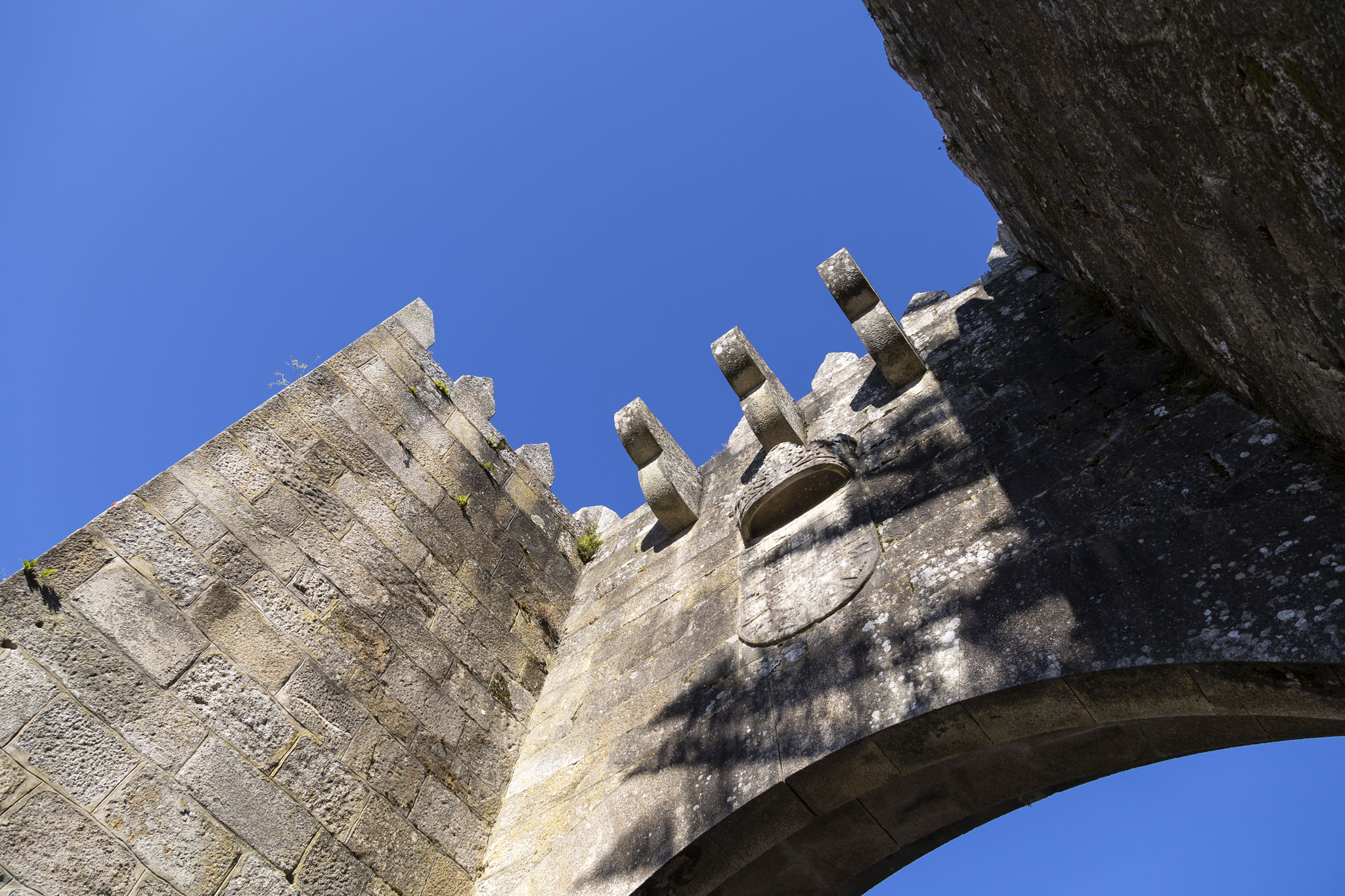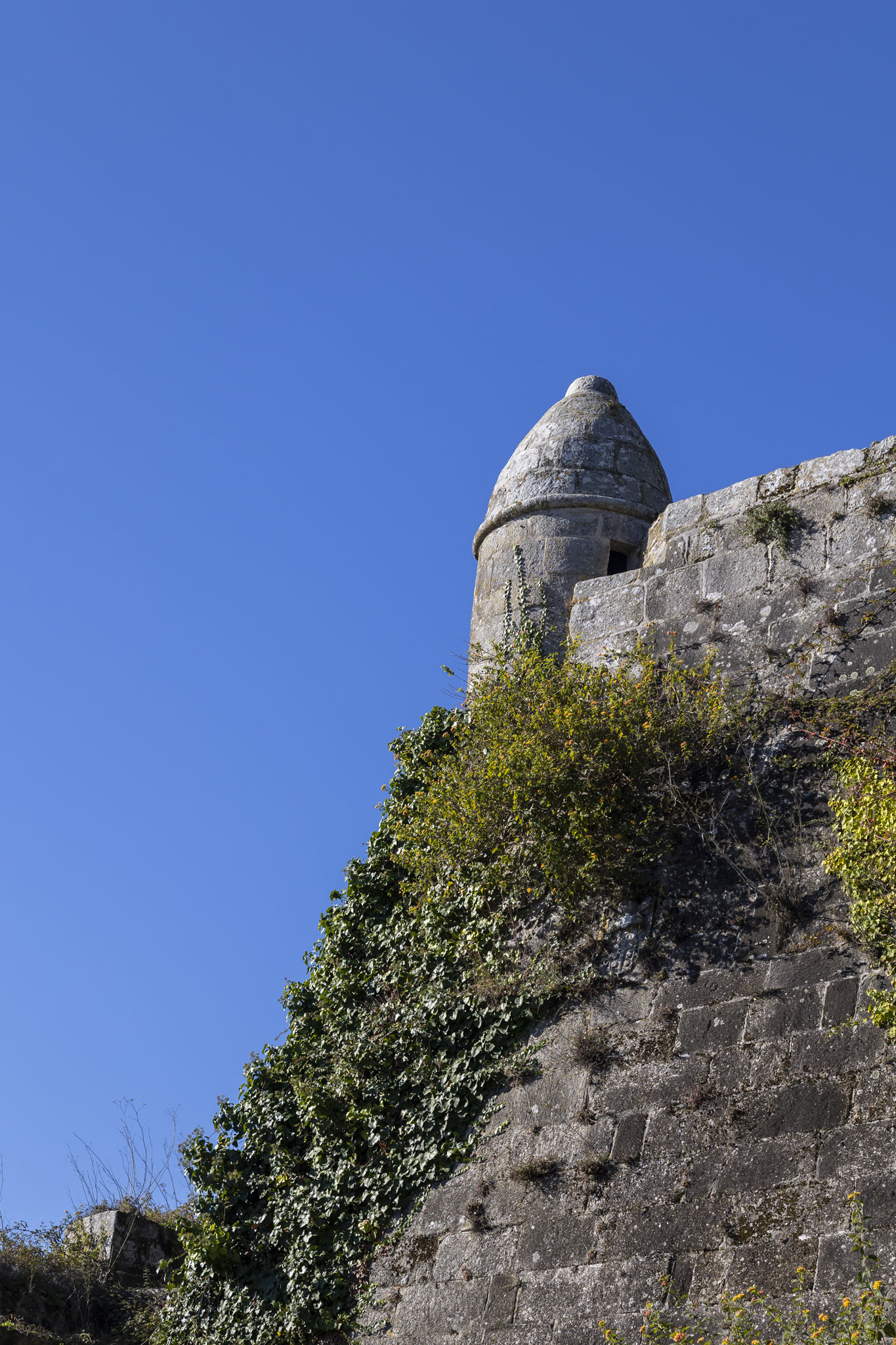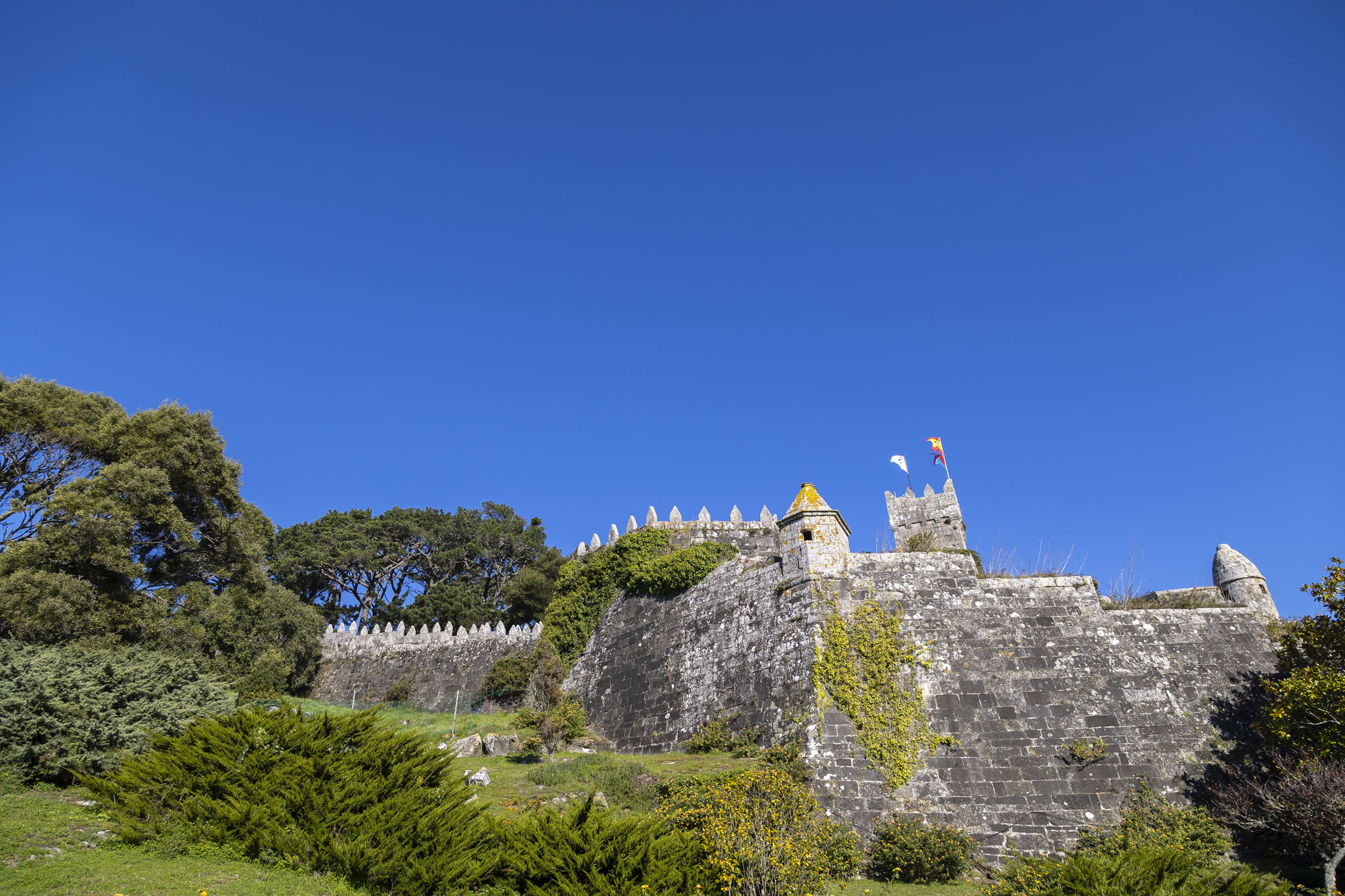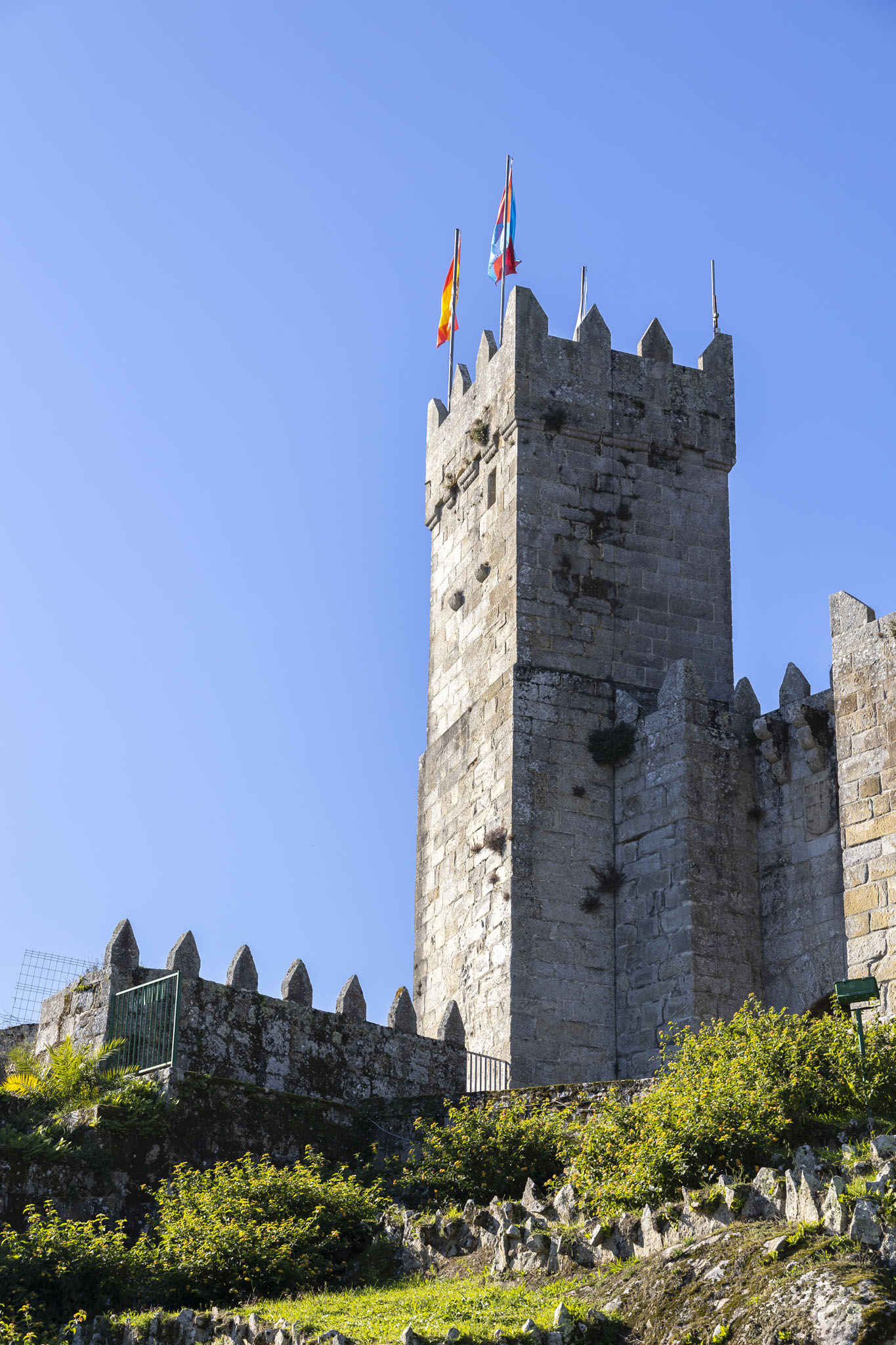The first part of our excursion while Ventura was docked at Vigo had taken us to a scenic viewpoint over the Spanish city but that had been a brief affair and not something we’d cared about when booking the trip. What we really wanted to see was the town of Baiona down the coast from Vigo, not because of any special significance but because we sometimes like to look at the popular trips and immediately discount them in order to do something a little different. Not always, of course, but when the usual tourist options fail to make us giddy with excitement or include something well-known but certainly popular for a reason then we look a little further afield to see if there’s a trip that other visitors might not typically take.
Baiona is a coastal town that grew to prominence in the medieval period, and, having a nice bit of land sticking out into the nearby bay, it made for the perfect place to situate a castle. In this first part of our day in Baiona I’ll cover our trip to the grounds of the castle and our break for some light lunch in the hotel within its walls.
Monterreal Castle (sometimes called the Fortress of Monterreal, and usually not in English because, really, had you heard of it before?) dates from around the twelfth century (even though some fortifications were on the site during Roman times), but its present form mostly comes from around four hundred years later. The town of Baiona grew when a royal charter permitted families to settle within the walls for protection, but the fortress itself only really grew in wealth and stature from the fifteenth century onwards when Baiona and A Coruña were declared the only ports in Galicia that could trade with foreign countries. The fourteenth century saw Monterreal Castle serve as the residence of the King of Portugal for a period (not that the Spanish wanted that), and the castle successfully helped to defend the town and repelled attacks by Sir Francis Drake in 1585. Little of all that history truly remains, though, other than a battery on the battlements and the walls themselves.
The large building within the confines of the walls of Monterreal Castle was the Parador de Baiona (or Parador del Conde de Gondomar), a hotel owned and run by a prestigious Spanish hotel chain. This was built in 1966 but remodelled in the 1990s and includes a chapel, swimming pool, and over a hundred rooms with easy access to some lovely views and walks. We didn’t get to see much of that, though, with our visit there primarily giving us the chance to grab some food from a buffet – fabulous cakes! – and enjoy either coffee or local wine. Well, of course we went for the wine. Very sweet, but nice.
There’s not a lot else to say about this part of our tour because after our snack and drinks, plus the chance to use the toilets that must be included on all cruise excursions by maritime law or something, we headed off on foot to see some of the highlights of the town of Baiona. This walk would take us down a sloping road, initially inside then outside the walls of the castle, but first we were shown the San Antón Battery.
The San Antón Battery is the location of four cannons pointing out to sea from the battlements of the castle. These cannons, though, never saw any real action, being cast in 1853, ten years after any conflict. That had been an internal matter, when a general in Vigo had decided to seize the town as part of a larger military uprising and had sent a small force to take Baiona. Cannon fire from Monterreal at that point had killed a number of attackers and wounded many others. The castle itself had been declared no longer militarily significant ten years prior to all that, and that status continued despite the skirmish which is why it eventually fell into disrepair, then private hands, and now the location of a hotel.
The walk was a pleasant one – the weather, as you can see, was glorious for this trip – and it took us through a few arched gateways outside the walls of Monterreal Castle. The fortifications looked fabulous in the sunshine.
Monterreal Castle contains a number of towers of some distinction. This final one as we emerged at the entrance to the historical landmark was the Torre do Reloxo. This tower was constructed around 1500 when the royal family granted the castle that privilege. A bell, forged in 1510, was then placed in the tower, allowing it both to serve as a clock for the growing castle and growing town, and to warn about potential attacks. French vessels, attacking the port in 1533, caused serious damage to the tower, but it looked pretty good to us so perhaps they had the builders in afterwards.
In the next part of the coverage of this excursion I’ll go through some of the highlights of Baiona as we were taken on a short walking tour before an even shorter period of free time to explore the town ahead of our return to our ship at Vigo.
